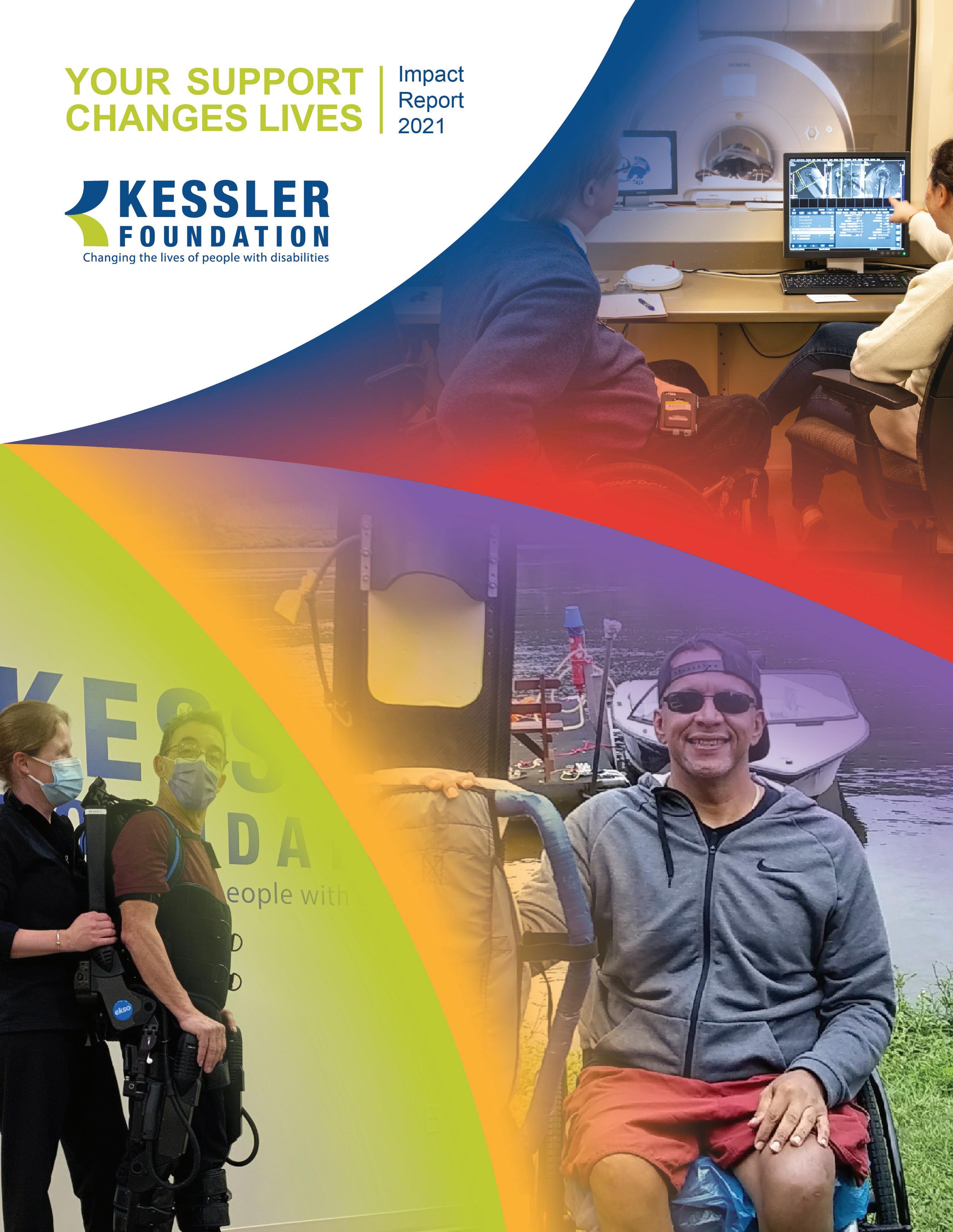
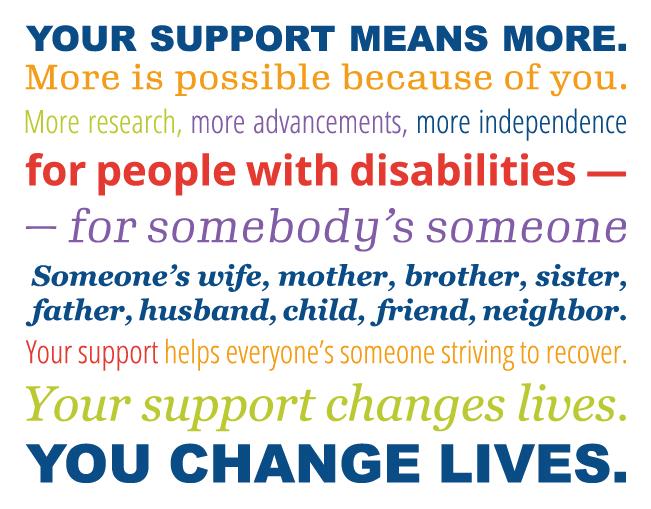
2
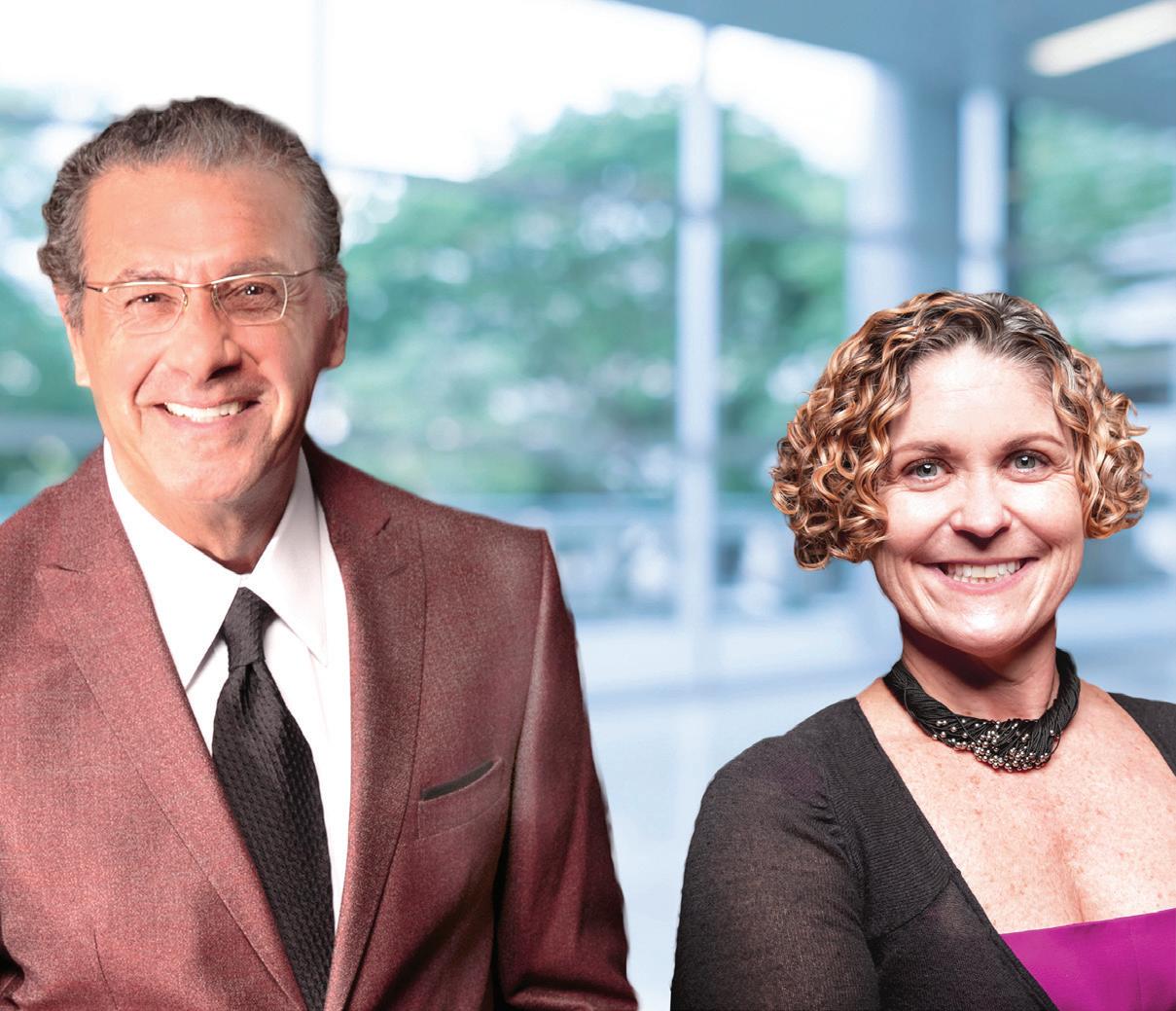
Impact Report 2021
Your support of Kessler Foundation champions life-changing rehabilitation research and employment for people with disabilities—for somebody’s someone—someone’s wife, mother, brother, sister, father, husband, child, friend, neighbor. Your support helps everyone’s someone striving to recover.
Your support heals and inspires, never more so than now, when COVID-19 continues to challenge those most vulnerable. And, those most vulnerable are all somebody’s someone.
You enable our scientists to explore groundbreaking rehabilitation interventions. You help our grantmakers create pathways to employment and independence. You return people with disabilities to their homes, their communities, and the workplace.
Inside our Impact Report 2021, you will find stories of what you have made possible and the people whose lives you’ve changed. Because of your generosity, more is possible for them, for those who love them, and for all people living with disabilities—more research, more advancements, more independence. For all of this, we thank you.
In gratitude for changing lives,

Rodger DeRose
President and CEO
rderose@kesslerfoundation.org
973.324.8360

Michele Pignatello
Vice President and Chief Development Officer
mpignatello@kesslerfoundation.org
973.324.8363
YOU SUPPORT. YOU HEAL. YOU INSPIRE. YOUR SUPPORT CHANGES LIVES
Rodger DeRose and Michele Pignatello
YOUR SUPPORT RAISES EXPECTATIONS FOR RECOVERY AFTER SPINAL CORD INJURY
January 2020 marked a turning point in spinal cord injury research: the launch of the Tim and Caroline Reynolds Center for Spinal Stimulation at Kessler Foundation. With support from Tim and Caroline Reynolds and you, our scientists, led by Gail Forrest, PhD, Reynolds Center director, and Steven Kirshblum, MD, Reynolds Center co-director and the Foundation’s chief medical officer, have the resources to take the lead in raising the expectations for recovery.

Spinal cord imaging provides a map of the cord and its connections to help people with spinal cord injury regain function.
Six participants with different types of spinal cord injury have experienced positive results with transcutaneous stimulation, where electrical stimulation is applied to the skin overlying the damaged spinal cord. Among their gains are improved motor function of their arms and legs, better bowel and bladder control, reduced spasticity, and return of sensation. Some gains have persisted for as long as six months following treatment, indicating that effects may be long lasting, according to Dr. Forrest.
By incorporating the neuroimaging capabilities of the Rocco Ortenzio Neuroimaging Center, our scientists made an important discovery. Detailed imaging of the cord’s structure showed an increase in nerve fibers after the stimulation protocol, which may be a sign of increased connectivity within the damaged cord.
Research into another method of stimulation—epidural stimulation—will be conducted at the Reynolds Center once the safety of participants and researchers can be assured amid the pandemic. For epidermal stimulation, the stimulator is surgically implanted directly on
2
the cord. To prepare for expansion into epidural stimulation at the Reynolds Center, staff are gathering data on spinal cord mapping, a necessary tool for optimal placement of the stimulator during surgery. “Precise mapping will enable us to program the stimulator after it’s implanted, to send signals to specific muscle groups,” Dr. Forrest explains. “That will help individuals regain voluntary movement and enable better control of bowel and bladder and other functions.”
Your continued generosity accelerates progress. “Generous support means we can extend our study of spinal stimulation, focusing on individuals with long-term injuries and complete loss of motor function,” says Dr. Kirshblum. “This includes applying transcutaneous and epidural stimulation, as well as the combination of brain and spinal cord stimulation,” he adds. “We will be able to continue our neuroimaging studies, documenting structural and physiological changes in the spinal cord and brain, and seeking correlations with multi-system effects.”

“The Reynolds Center is home to exciting new research that promises to alter our view of the potential for recovery for individuals with spinal cord injury,” says Dr. Kirshblum.
“Raising awareness of the results being achieved at Kessler will help prepare professionals in spinal cord injury rehabilitation transform the future of care and treatment,” Dr. Kirshblum concludes confidently.
“The Reynolds Center is home to exciting new research that promises to alter our view of the potential for recovery for individuals with spinal cord injury.”
—Steven Kirshblum, MD
Your Support Changes Lives: Impact Report 2021
Gail Forrest, PhD, and Steven Kirshblum, MD
A WHOLE NEW LEVEL OF HOPE FOR CHRIS
“One minute I was climbing a ladder to change a lightbulb on my roof, the next I was flat on my back, unable to move,” recalls Chris Tagatac, who fell 25 feet and sustained a spinal cord injury when his ladder slipped.
Chris was paralyzed from the chest down and doctors said he would never walk again. Amazingly, seven months after his injury, Chris took his first steps at Kessler Foundation in an Ekso—a robotic, battery-powered exoskeleton. Since those first steps, Chris has continued to participate in research at Kessler Foundation and most recently joined a study at the Tim and Caroline Reynolds Center for Spinal Stimulation.
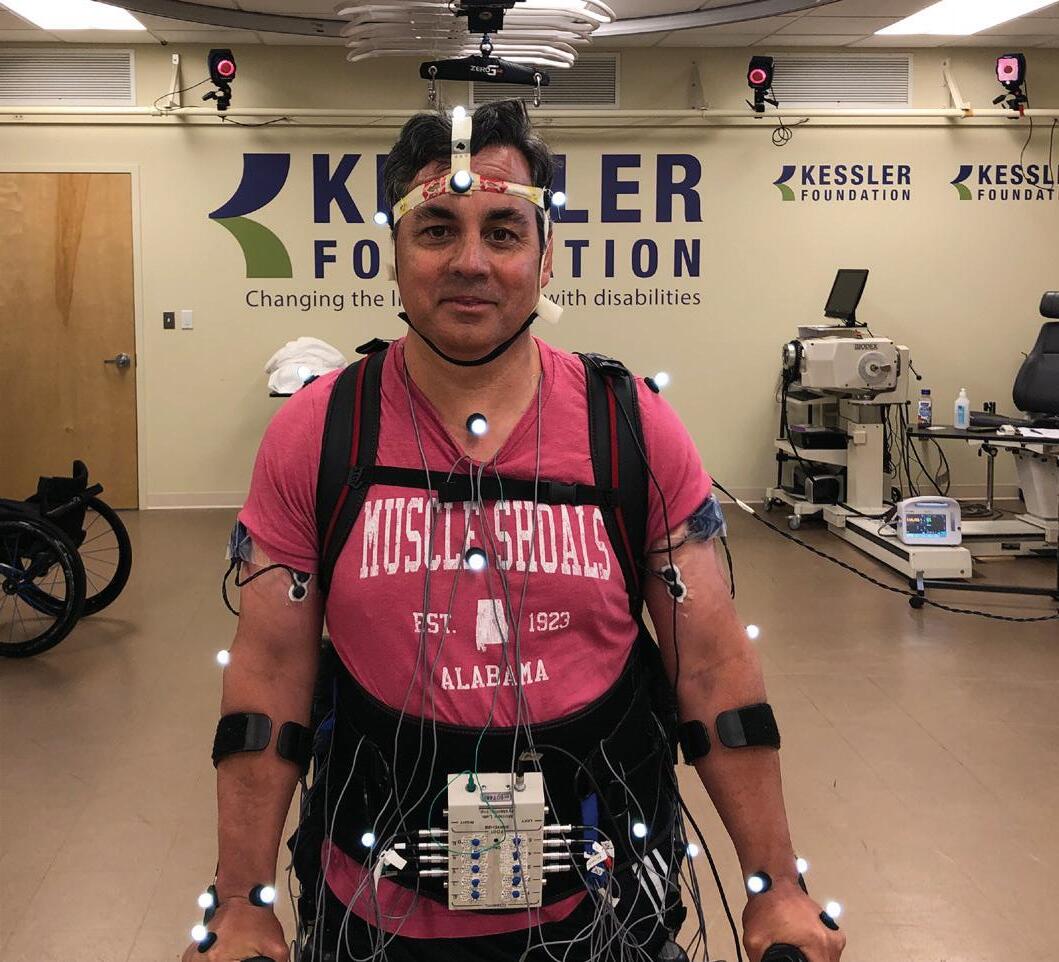
Chris participates in a Reynolds Center study.
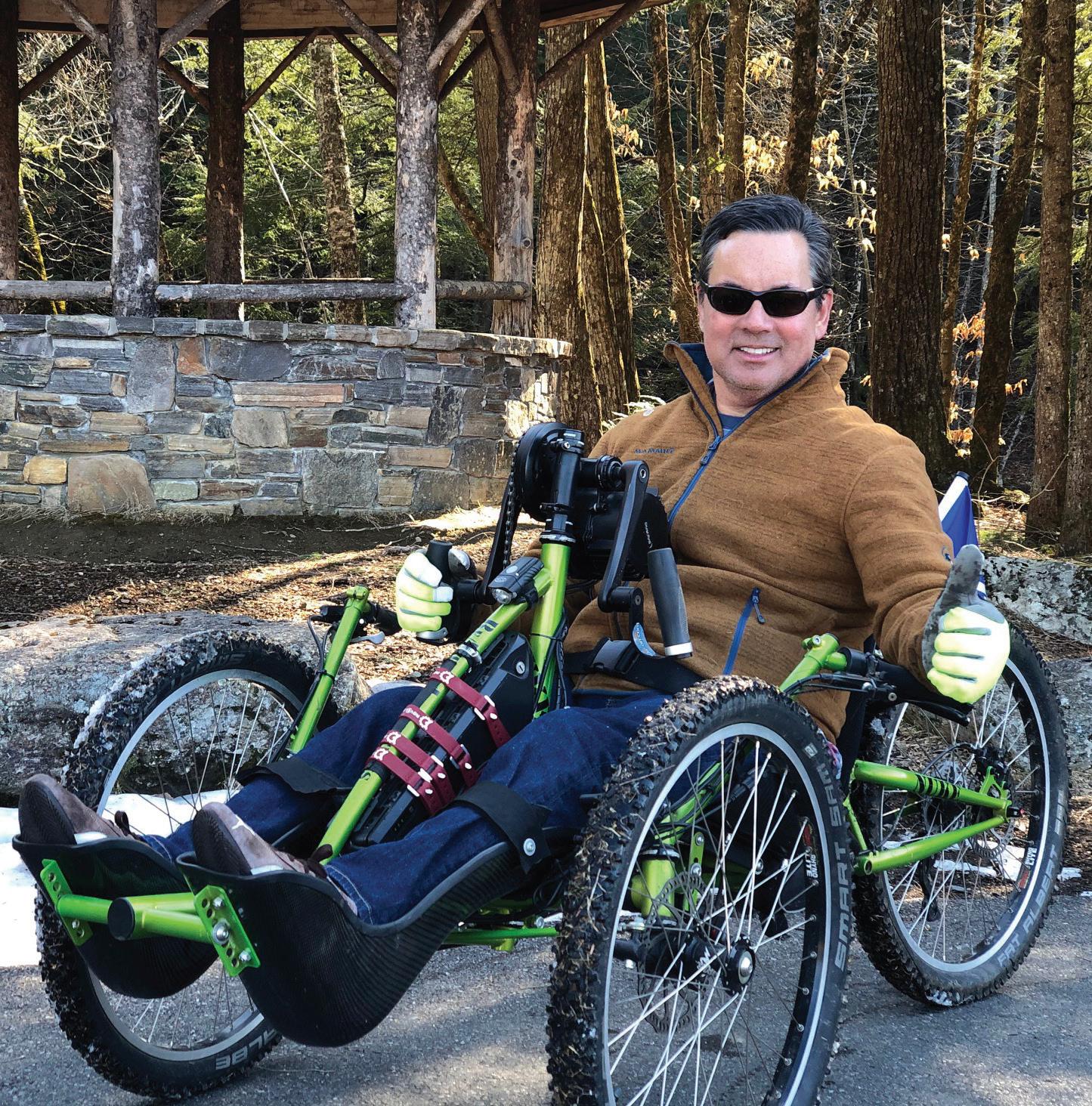
“Walking in the Ekso was pivotal in my recovery,” says Chris, “but groundbreaking advances in spinal stimulation have helped me reach a whole new level of hope.” With transcutaneous stimulation, Chris regained sensation in his ankles, feet, and toes and improved functional movement in his legs.
“I can’t tell you how incredible it is to once again have sensation,” Chris emphasizes. “With the stimulation, I feel an increase in strength, better balance and control in the trunk of my body, and improved blood circulation in my legs.”
“This summer is the 10-year anniversary of my accident,” Chris adds. “The science to improve the lives of people living with spinal cord injury is advancing rapidly. I hate to think where I would be today if I hadn’t participated in Kessler Foundation’s outstanding research. Thanks to donors like you, my family and I are filled with immense hope for the future.”
4
Chris Tagatac
YOUR SUPPORT SPURS ADVANCES IN REGENERATIVE REHABILITATION THROUGH INNOVATIVE RESEARCH
Thanks to support from Jay Lieberman of the Derfner Foundation and donors like you, a team of scientists and clinicians at the Derfner-Lieberman Laboratory for Regenerative Rehabilitation Research explores new ways to accelerate recovery for people with disabling musculoskeletal injuries.
Founded just four years ago, the Derfner-Lieberman Laboratory in the Center for Spinal Cord Injury Research at Kessler Foundation has gained a national reputation for innovation. Early successes with pilot studies attracted interest in larger studies, with grants awarded from state and federal sources. Added support from the Derfner Foundation and you has expanded opportunities for research and clinical fellowships, strengthening this unique partnership for translating research advances to clinical care.
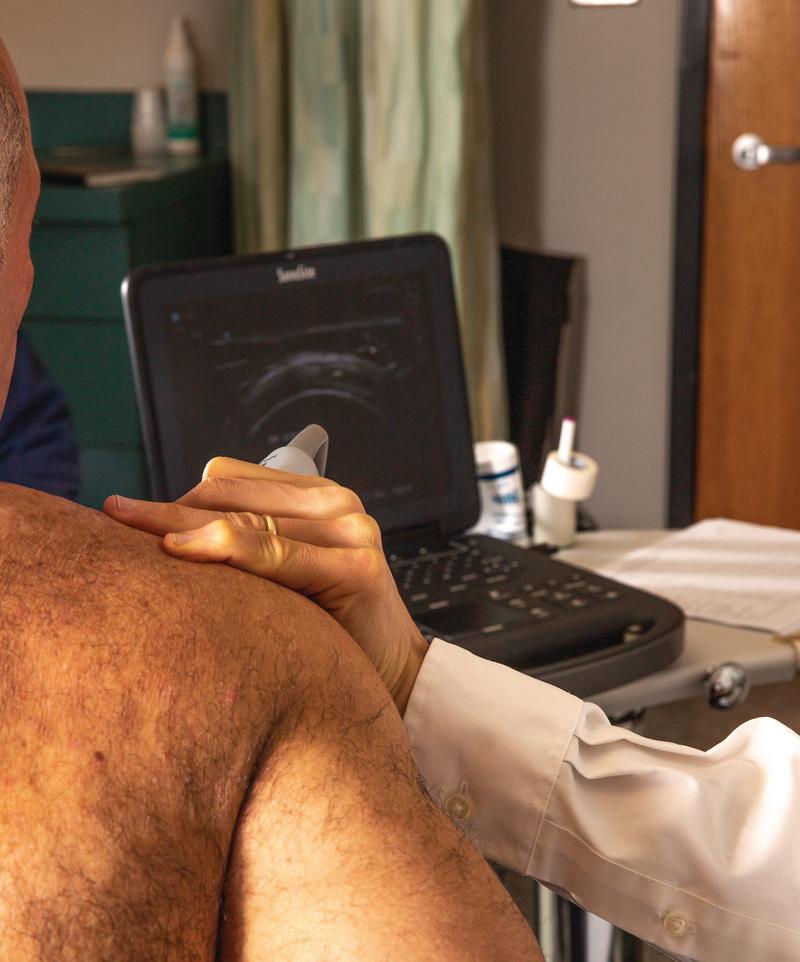
Studies in wheelchair users with shoulder pain are expanding, thanks to your support.
Researchers leading these efforts are Trevor Dyson-Hudson, MD, who directs the Derfner-Lieberman Laboratory and the Center for Spinal Cord Injury Research at Kessler Foundation; Gerard Malanga, MD, director of New Jersey Regenerative Institute and a visiting scientist at Kessler Foundation; Nathan Hogaboom, PhD, the first Derfner-Lieberman Fellow, now co-director of the Derfner-Lieberman Laboratory.
In 2020, Dr. Hogaboom was named a Rising Star of Regenerative Research by the Alliance for Regenerative Rehabilitation Research and Training, in partnership with the International Consortium for Regenerative Rehabilitation.
Your Support Changes Lives: Impact Report 2021

Nathan Hogaboom, PhD
The team is expanding studies in wheelchair users with shoulder pain unresponsive to standard treatments. Their approach, a minimally invasive alternative to surgery, consists of a single injection of autologous micro-fragmented adipose tissue. “We extract fat from the participant’s abdomen, process the sample, and inject it into the shoulder joint,” explains Dr. Malanga. Among the new equipment donated by the Derfner Foundation is a mini arthroscope, called a nanoscope, which can be inserted in the joint to verify the improvements in tendon and cartilage following these treatments.
To document improvements, participants undergo periodic examinations and imaging studies at the Rocco Ortenzio Neuroimaging Center at Kessler Foundation. ShopRite/Wakefern Food Corp. recently donated a shoulder coil, a custom device that allows scientists to image the shoulder joint in much greater detail. “Now, we can precisely measure changes in the tendons, helping us identify biomarkers that document response to the injection,” notes Dr. Hogaboom. “This will expand our research and open the way to more funding and more advances in care,” he predicts.
“If our less invasive treatment proves effective, recovery time will be much shorter than with surgery, and we will lower risk for complications.”
—Gerard Malanga, MD
6
The team’s initial success with this regenerative approach has expanded to other musculoskeletal injuries. A new study investigates the application of the alternative treatment to military personnel with torn meniscus in the knee, a common reason for limited duty. “If our less invasive treatment proves effective, recovery time will be much shorter than with surgery, and we will lower risk for complications,” says Dr. Malanga.
Another new study will test a device, the Cervigard Neck Collar, for treating neck pain in the military population. “Analgesics may not only lead to addiction and accidental overdose, but can impair cognitive and physical functions critical to safety and performance,” explains Dr. Malanga. “Short-term noninvasive therapy using the neck collar device is one positive approach.”
The goal of this research: Help people recover as quickly and as fully as possible.
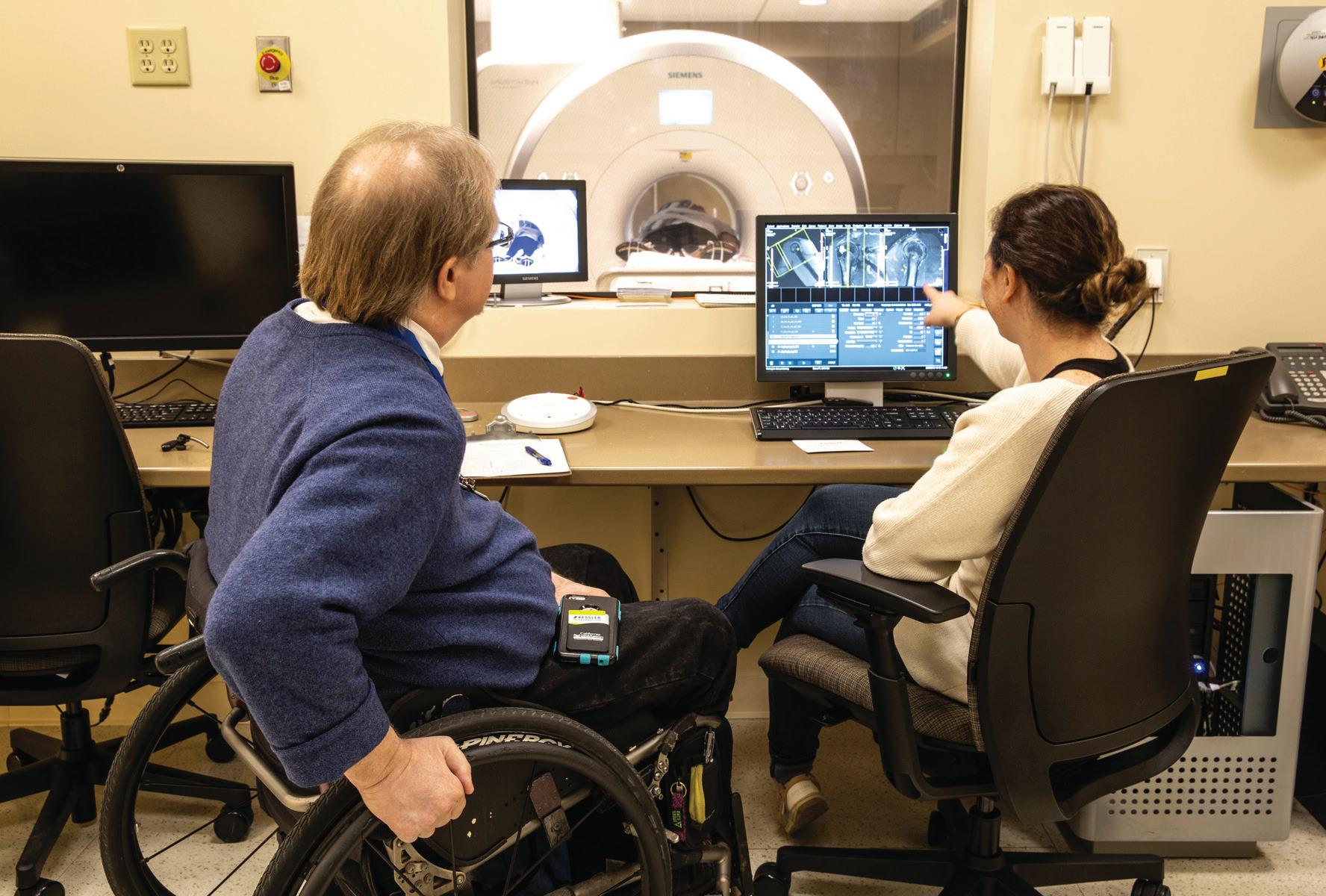
Your Support Changes Lives: Impact Report 2021
Trevor Dyson-Hudson, PhD, observes shoulder imaging at the Ortenzio Center.
VICTOR REGAINS SPORTS-CENTRIC WAY OF LIFE
“I’m passionate about sports,” says Victor Pena. “Staying active improves my physical and mental health.” Victor became paralyzed over 30 years ago, when a shot in the back on his 20th birthday caused a spinal cord injury.
Anyone else might have thought their days of active sports were over, but not Victor. In the years following his spinal cord injury, he adjusted by joining adaptive sports, including snow skiing, hand cycling, body surfing, and water skiing. “I’m stronger, more engaged in life, and more independent.”
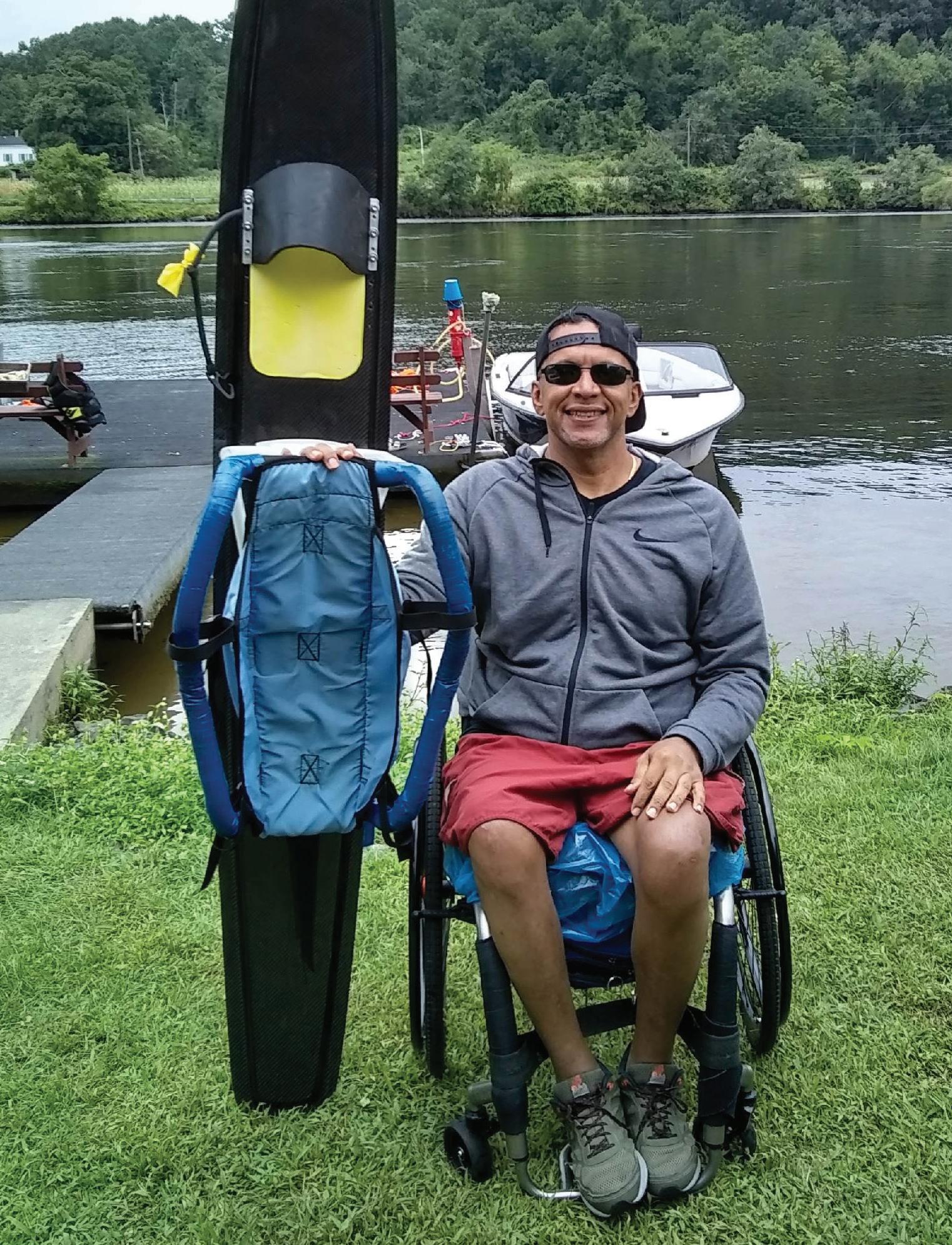
Despite Victor’s physical strength from so many years of adaptive sports, he severely injured his shoulder while transferring out of his wheelchair one day. “It’s a common injury for people in wheelchairs,” explains Victor. “The pain was intense. Suddenly, I was unable to propel myself in the wheelchair, move my arm, or get a good night’s sleep without pain. Sports were put on hold.”
Victor was reluctant to undergo surgery. Luckily, he learned about Kessler Foundation’s regenerative rehabilitation research at the Derfner-Lieberman Laboratory. Thanks to donors like you, he participated in a study—fat was extracted from his abdomen, processed, and injected into his injured shoulder.
Months after receiving the treatment, Victor continues to practice the exercises he learned during his participation in research—and reaps the benefits. No longer experiencing shoulder pain, Victor spent the summer of 2020 water skiing more than he ever had. He also found alternative ways to stay active at home during the pandemic by joining virtual boxing and yoga classes.
“I sincerely thank the donors who support Kessler Foundation’s research. Without you, I wouldn’t be able to enjoy the sports I love, maintain my physical and mental strength, or live independently.”
8
Victor Pena can enjoy the sports he loves, thanks to you.
YOUR SUPPORT FUELS INTERNATIONAL COLLABORATIONS TO IMPROVE REHABILITATION FOR PEOPLE WITH DISABILITIES

As the depth and scope of Kessler Foundation’s research have expanded, thanks to your support, our influence has grown in the international community of rehabilitation research. Collaborations are ongoing with research institutions around the globe and the Foundation’s postdoctoral training program continues to draw a diverse group of young scientists. Eager for careers in rehabilitation research, these scientists hail from many countries, for fellowships in cognitive neuroscience, biomedical engineering, pediatric rehabilitation, and regenerative medicine, mentored by John DeLuca, PhD, senior vice president for research and training, and Kessler Foundation’s Center directors.
Your Support Changes Lives: Impact Report 2021
A large international clinical trial underway has implications for individuals with progressive multiple sclerosis, according to Nancy Chiaravalloti, PhD, director of the Centers for Neuropsychology, Neuroscience and Traumatic Brain Injury Research. Under Dr. Chiaravalloti’s direction, Kessler Foundation participates in the study, along with 10 other sites in five countries—Canada, Belgium, Denmark, Italy, and the UK.
This study looks at the potential for cognitive rehabilitation and exercise to improve cognitive dysfunction, which affects up to 70% of people with progressive MS. Worldwide, more than 200 participants are enrolled so far, with study materials available in English, Italian, Danish, and Dutch. “That is good progress

toward our enrollment goal of 360,” notes Dr. Chiaravalloti. “If we can show that accessible, noninvasive interventions are effective across different cultures, we will have made a big impact on how progressive MS is managed in the future.”
Individuals with MS often have disorders of social cognition, which complicate their interactions with others at home, in school, and at work. Helen Genova, PhD, assistant director of Kessler Foundation’s Center for Neuropsychology and Neuroscience Research, is working with MS researchers in France and Italy, looking at the influence of cultural differences and developing ways to help individuals improve their social interactions.
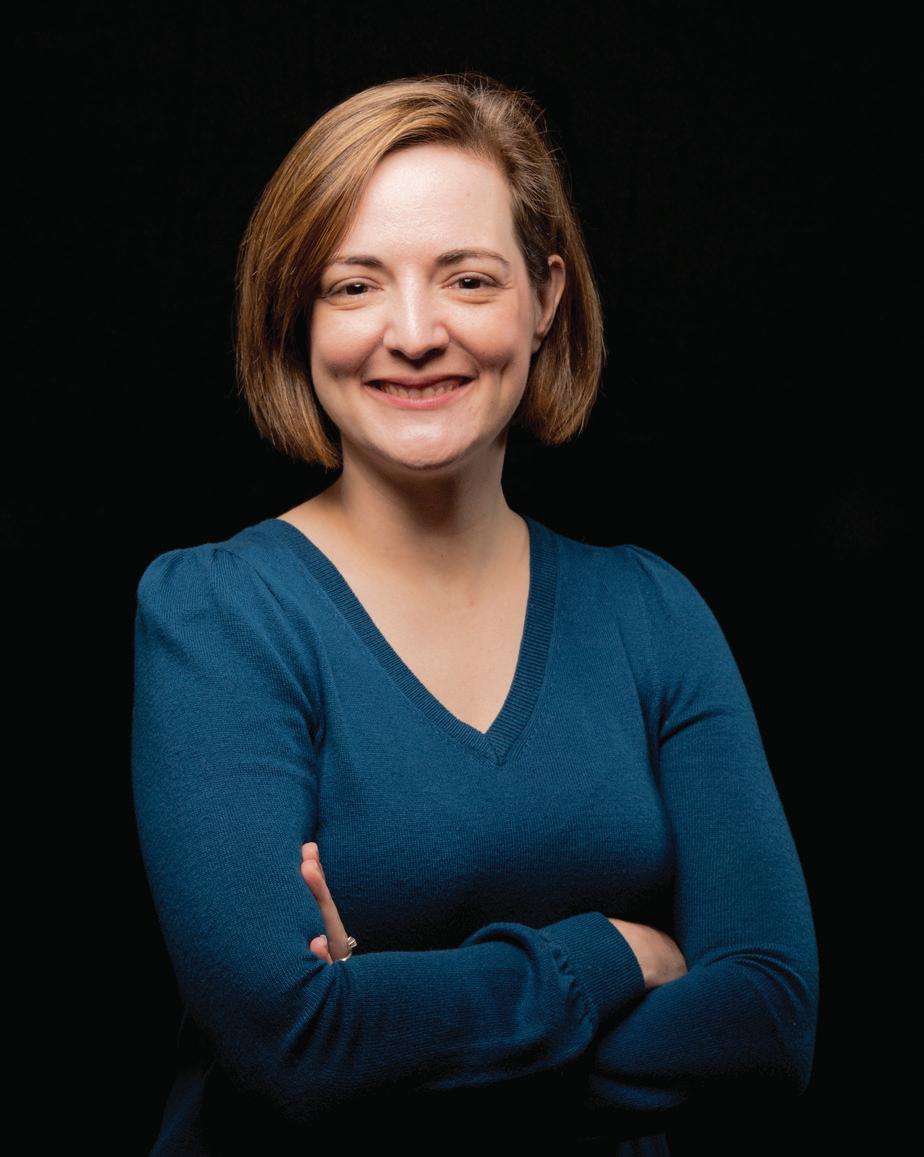
10
Nancy Chiaravalloti, PhD
Helen Genova, PhD
Researchers are also focusing on Spanish-speaking populations, which have greater difficulty recovering from traumatic brain injury. A tool for cognitive rehabilitation developed by Dr. Chiaravalloti – the modified Story Memory Technique – is available in Spanish and Italian. Scientists in Spain, who learned the technique at Kessler Foundation, plan to test it with MS patients in Madrid.
At Kessler Foundation’s Center for Traumatic Brain Injury Research, senior research scientists Denise Krch, PhD, and Anthony Lequerica, PhD, collaborate with international experts to study individuals with brain injury in Mexico, and Central and South America. Their common goal is to improve clinical care for this culturally diverse population by fostering greater participation in research studies.
No matter the country, one thing is certain: Kessler Foundation, with your support, continues to lead in the global arena for rehabilitation research. Our former postdocotoral fellows like Abhijit Das, MD, DM, have brought the knowledge and skills gained at Kessler Foundation to their home countries, becoming innovators in rehabilitation and raising the bar for what can be achieved to improve outcomes and quality of life for people with disabilities all over the world.
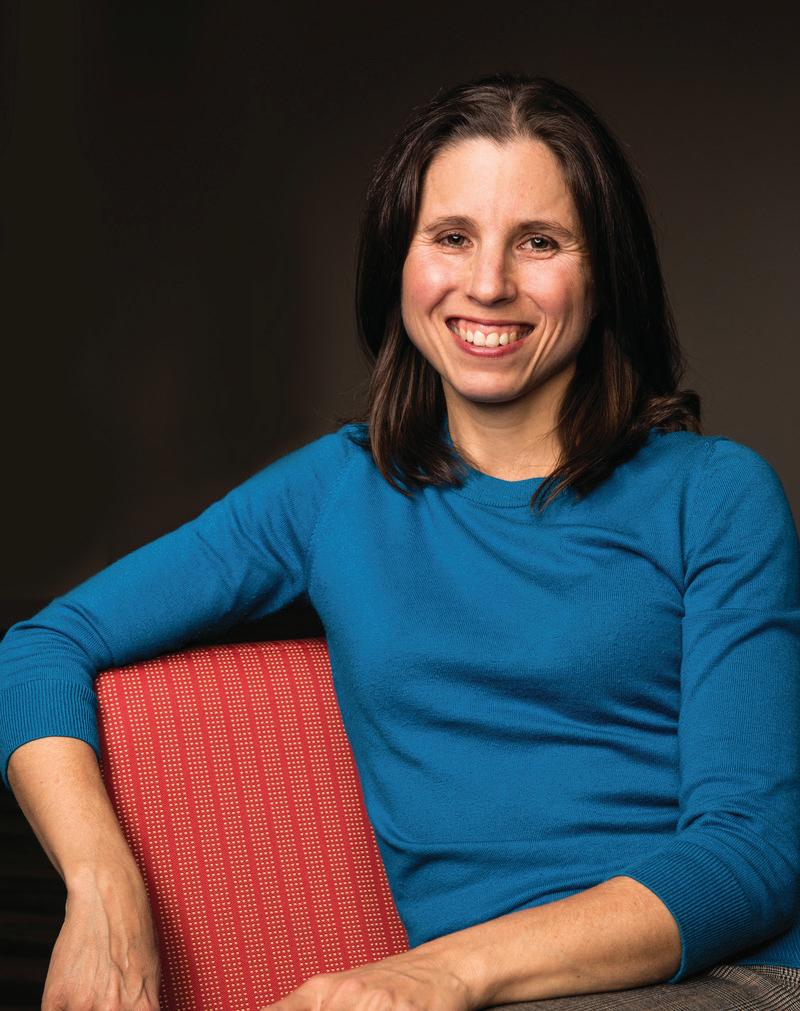
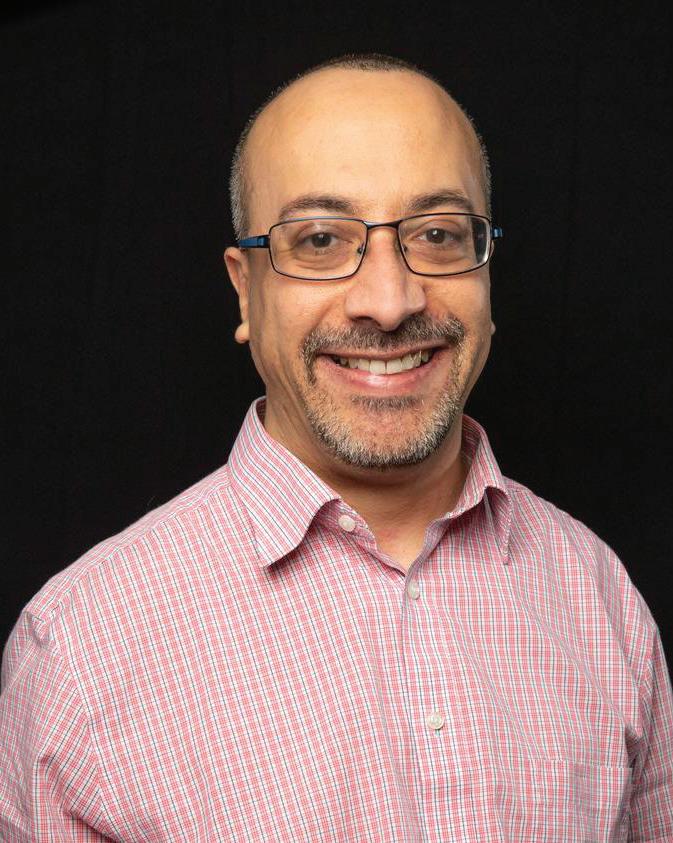
Your Support Changes Lives: Impact Report 2021
Denise Krch, PhD
Anthony Lequerica, PhD
ABHIJIT IS TRAINED AS AN AGENT FOR CHANGE
Abhijit Das, MD, DM, sought a research fellowship at Kessler Foundation to acquire state-of-the-art knowledge in clinical rehabilitation and rehabilitation research and bring it home to India. When Dr. Das completed his fellowship and returned home, he became director of neurorehabilitation at the Institute of Neuroscience, a comprehensive 150-bed facility for neurosurgery and related treatments in Kolkata. Later, he became director of neurorehabilitation at AMRI Hospital, also in Kolkata. In 2019, Dr. Das moved to the UK, where he is a neurologist at the Walton Centre, a major hospital specializing in neurology and neurological surgery in Liverpool.
The focus of Dr. Das’s work is twofold: emerging techniques of non-invasive brain stimulation and the development of low-cost, point-of-care medical devices that have practical application in resource-poor countries.
In 2020, Dr. Das received an award at the Dementia 2020 Conference in London for his research using eye tracking to diagnose dementia. He and the Walton Centre NHS Foundation Trust recently received the Glow’s Health Tech Prototyper Award for their development of the Walton ‘NeuroBot,’ which allows patients to manage their appointments through a user-friendly interface, using natural language chat. The NeuroBot confirms,

cancels, or reschedules appointments for the patient, solving the problem of missed medical appointments—a huge strain to healthcare systems globally and one that has worsened due to COVID-19.
“The training I received at Kessler Foundation put me on the path to becoming a strong clinician-scientistinnovator. The experience expanded my horizons so I understood more fully how people from different fields of expertise could come together to drive innovation in patient care. Because of Kessler Foundation’s international collaborations and postdoctoral training program, these ‘cross-domain’ endeavors can continue globally and with greater speed. I am grateful for the knowledge I gained through my training, which helped me become an agent for change,” says Dr. Das.
“Abhijit’s success underscores the value of our postdoctoral training program, which, with your support, has graduated more than 100 young professionals. The skills and experience they gain at the Foundation form the basis for careers that change the lives of people with disabilities in the U.S. and abroad,” adds John Deluca, PhD.
12
Abhijit Das, MD, DM
YOUR SUPPORT PREPARES INDIVIDUALS WITH AUTISM AND BRAIN INJURY FOR SUCCESS IN THE WORKPLACE

Helping people with disabilities find their place in the world of work is an important goal of rehabilitation research at Kessler Foundation. Contributing their talents to the workforce benefits their communities and helps them gain independence and personal and professional fulfillment.
One Kessler Foundation researcher achieving success in preparing jobseekers with disabilities for the workplace is Helen Genova, PhD, assistant director of the Center for Neuropsychology and Neuroscience Research. With your support, Dr. Genova focuses on people with autism and traumatic brain injuries, who face significant challenges in finding jobs. From early pilot studies, funded by the Reitman Foundation and you, Dr. Genova has leveraged your generosity to win major federal and state grants to greatly expand her research in job readiness in these underserved populations.
Your Support Changes Lives: Impact Report 2021
Helen Genova, PhD, is achieving success in preparing jobseekers with disabilities for the workplace.
Young people with autism often have difficulty expressing themselves in social situations—a major obstacle to the job search and hiring process. “Developing ways to help them handle these challenges is essential to their ability to contribute their talents to the workplace, and reap the personal, social, and economic benefits of employment,” Dr. Genova notes.
To help them prepare for employment, Dr. Genova uses computerized training tools to help individuals identify their personal strengths and convey them to others. Recent funding from the National Institutes of Health supports her collaboration with experts in youth employment at the Level Up: Employment Skills Simulation Lab at the University of Michigan, whose work has been supported, thanks to you, by Kessler Foundation’s Center for Grantmaking. “Training young people with autism to recognize their strengths and interact more effectively with others will translate to easier transitions to the workplace,” Dr. Genova predicts.
As the pandemic forced the suspension of many research studies in early 2020, Dr. Genova continued her research, quickly transforming the in-person autism study to a tele-study, allowing individuals to participate from anywhere in the nation. “Unemployment is so high in this population, we really needed to find ways to keep the study going,” she said. “Offering remote participation has helped our research gain greater recognition and reach even more young people in need.”
Dr. Genova also transformed a similar in-person study for people with moderate to severe traumatic brain injury, opening the job skills training program to a broader population through online participation. “This population will benefit from practicing skills needed to function effectively at work. The program we are testing uses virtual reality, allowing jobseekers with brain injury to regain their skills by practicing them in a realistic environment,” explains Dr. Genova. “We anticipate that individuals recovering from traumatic brain injury will improve their social skills and increase their confidence, resulting in better employment outcomes.”
“Developing ways to help them handle these challenges is essential to their ability to contribute their talents to the workplace, and reap the personal, social, and economic benefits of employment.”
—Helen Genova, PhD
14
STRONG INTERVIEW
SKILLS BOOST HOLLY’S JOB SEARCH—AND CONFIDENCE
For 18-year-old Holly Coviello and her mother, the typical questions about finding employment have loomed large. Holly lives with Autism Spectrum Disorder (ASD) and though she is transitioning to college, her first job search is not far behind.
“We are trying to figure out the best post-college scenario for Holly,” says Holly’s mother, Amy. “We’re picturing a hybrid situation, where she will take some college courses, work for a period, followed by more classes. The job interview part of this plan feels overwhelming.”
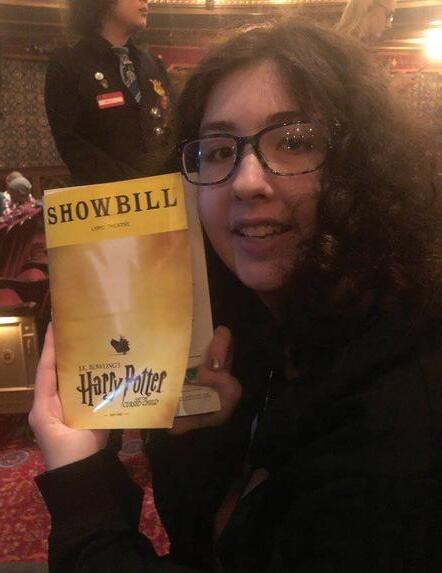
Amy learned about Dr. Helen Genova’s research for adolescents with ASD that focuses on strengthening interview skills to showcase talents to potential employers. “Holly’s had practice jobs throughout high school, but she’s never had a formal interview,” explains Amy. “We quickly signed her up for the study.”
Because of your support, Holly was able to gain valuable interview practice. “In the practice sessions, I learned how to answer questions and tell the virtual interviewer about my skills from other jobs I’ve had,” Holly says. “I didn’t get nervous because the interviewer wasn’t real.”
Holly says she likes school and looks forward to college, but she enjoys working too. “I’d love to find a job in musical theater because that’s my passion. Getting a job is hard for everyone, but my chances are better now because I practiced. Thank you for helping me learn the best way to tell an employer what I can do.”
Your Support Changes Lives: Impact Report 2021
Holly Coviello, who lives with ASD, would love to find a job in musical theater.
YOUR SUPPORT BOOSTS EMPLOYMENT FOR YOUTH WITH DISABILITIES THROUGH TECHNOLOGY
With funding from Kessler Foundation, Matthew J. Smith, PhD, at the University of Michigan School of Social Work, implemented the Virtual Reality Job Interview Training (VR-JIT) program for high school students with disabilities. Dr. Smith received a Signature Employment Grant, the largest of the grants awarded by the Foundation—made possible by your support.
“Job interviewing is a particularly challenging barrier to employment for students with disabilities,” explains Elaine E. Katz, MS, CCC-SLP, senior vice president of grants and communications at the Foundation. “This virtual reality training program is designed to engage students and better prepare them to join the workforce upon graduation.”
 Matthew J. Smith, PhD
Matthew J. Smith, PhD
The VR-JIT program uses speech recognition software to simulate job interviews between students and a virtual interviewer, allowing students with disabilities to learn in an environment free of fear or embarrassment. Students in Michigan, Illinois, and Florida participated in the training program, which reported a 41% employment rate for the 678 students enrolled, according to Dr. Smith. “This exceeded our target of 32%,” asserted Dr. Smith, “and is far above the national employment rate of 18% for youth with disabilities.” The most common diagnoses for enrollees were autism, learning disability, emotional disability, and intellectual disability.
Testing of the VR-JIT paralleled the expansion of research in transition-aged youth by Helen Genova, PhD, assistant director of the Center for Neuropsychology and Neuroscience Research at Kessler Foundation. Today, Dr. Genova works closely with Dr. Smith on innovative ways to help young people with autism and traumatic brain injury find fulfillment and independence through employment.
Katz summarized her view of their collaboration: “It is a winning combination that illustrates what can be achieved when grantmaking and research focus on a common goal.”
16
YOUR SUPPORT ADVANCES NEUROIMAGING FOR REHABILITATION RESEARCH
Thanks to you, conducting research at Kessler Foundation gives our scientists a real advantage. Because of the capabilities of the Rocco Ortenzio Neuroimaging Center, our studies have an added dimension. The Center’s powerful Siemens Skyra MRI scanner enables researchers to work in real time, correlating a person’s function and behavior with activity in the brain and spinal cord, and documenting the effectiveness of new interventions.
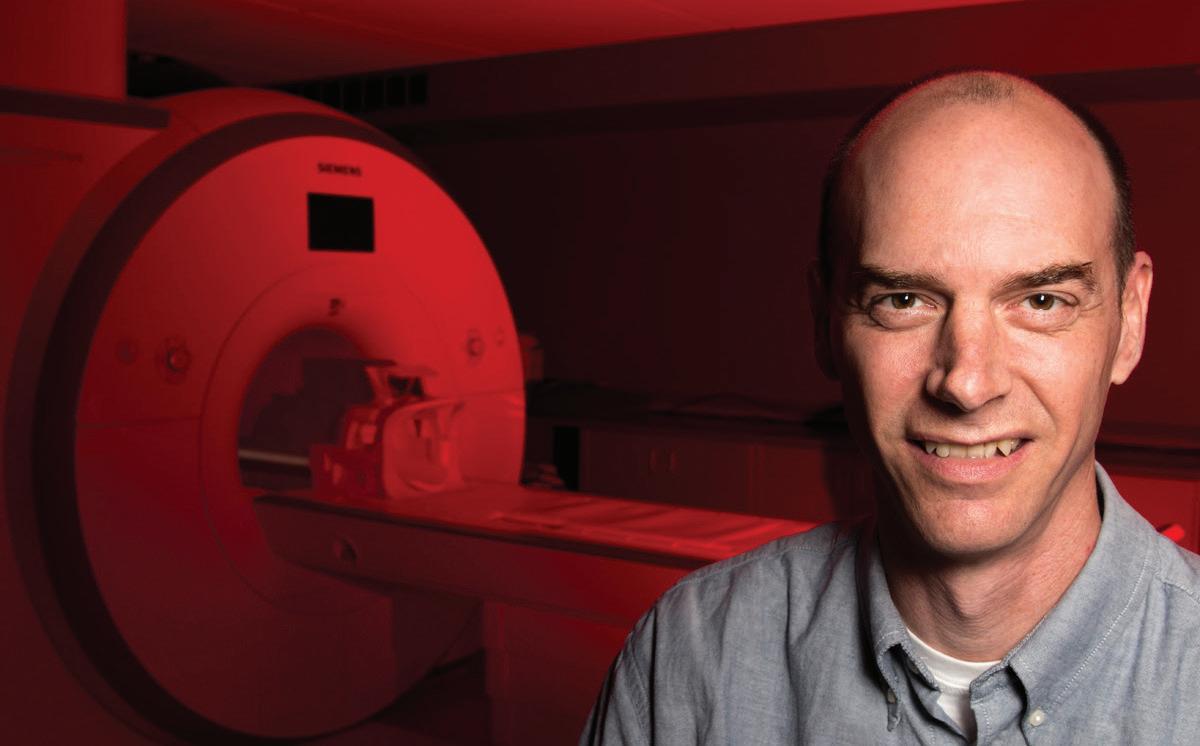 Glenn Wylie, DPhil
Glenn Wylie, DPhil
In 2020, the Foundation partnered with Siemens Healthineers USA, adopting an agreement that joins the mission of Kessler Foundation with the technical resources of Siemens to accelerate the pace of rehabilitation research that changes lives. According to the Center’s director, Glenn Wylie, DPhil, the agreement enables scientists to collaborate directly with the healthineers, a group of engineers who help develop best practices in the rapidly growing field of neuroimaging.
“Scan quality is affected by the slightest movement,” notes Dr. Wylie, “including the person’s breathing and heart beats.” This widely recognized problem motivated the healthineers to work on a potential solution to be tested at the Ortenzio Center. Dr. Wylie speaks enthusiastically about the innovation. “While collecting data on brain activity, we simultaneously collect data on heart and respiratory activity,” he explains. “Those unwanted signals can then be subtracted, leaving us with a cleaner picture of brain activity alone. We are excited to contribute to this solution, which promises to greatly improve the quality of research data,” he emphasizes, ”and accelerate advances in rehabilitation research.”
The agreement also encourages collaboration between institutions. One example is research being done by Olga Boukrina, PhD, in Kessler Foundation’s Center for Stroke Rehabilitation Research. Dr. Boukrina gained access to a neuroimaging technique customized at another research facility, which allows data for brain activation and cerebral blood flow to be collected at the same time. This provides more accurate interpretation of brain imaging in stroke survivors, aiding her research in reading deficits after stroke.
Your Support Changes Lives: Impact Report 2021
YOUR SUPPORT IMPROVES READING AFTER STROKE
Two million stroke survivors have aphasia— difficulty with language communication that contributes to poor quality of life. Many also have impaired reading, an understudied area of research that is a major interest of Olga Boukrina, PhD, research scientist in Kessler Foundation’s Center for Stroke Rehabilitation Research. “In today’s society where we need to read texts, emails, and online resources, the inability to read can be incapacitating,” reports Dr. Boukrina.
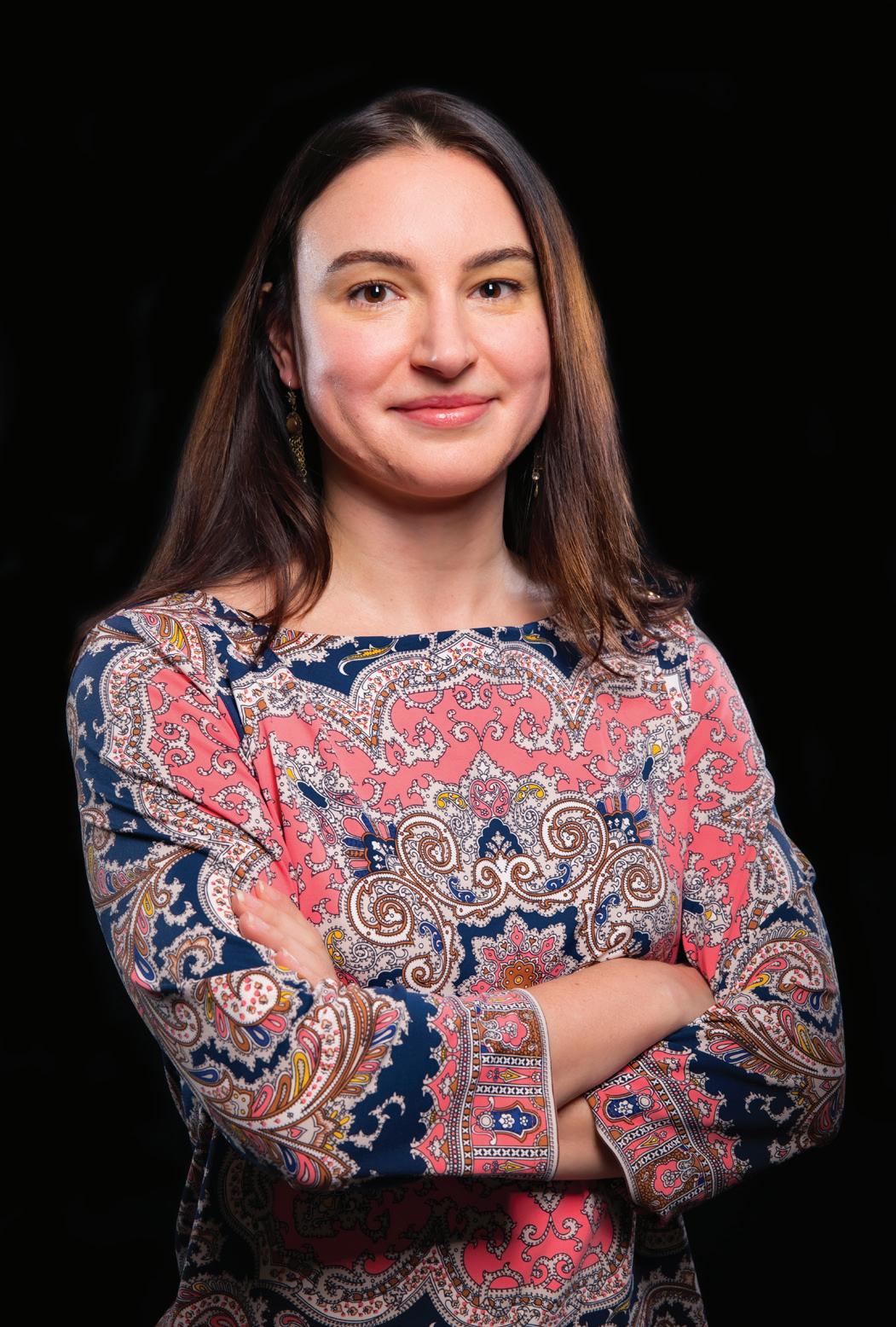
Reading deficits are typically addressed as part of aphasia treatment. Dr. Boukrina favors a more targeted approach. Her goal, with your support, is to develop therapies specifically for reading rehabilitation. Using the unique neuroimaging resources of the Ortenzio Center, she is identifying areas of the brain important for reading and the impact of stroke damage. “There is definitely room to improve treatment for reading difficulties,” she emphasizes. “We need to use the patients’ time in rehabilitation wisely, by identifying reading deficits early, and intervening with therapy tailored to the type of deficit.”
Through the Siemens agreement, Dr. Boukrina is collaborating with Cardiff University in the UK, adapting their technique for simultaneously measuring blood flow and activation in the brain. “Both are important measures for reading recovery after stroke. Exploring these patterns of recovery will help us find effective ways to improve reading outcomes.”
Research participants are recruited from Kessler Institute for Rehabilitation. “Thanks to the stroke survivors who volunteer for our studies, we are gaining an in depth understanding of the impact of stroke on the ability to read,” concludes Dr. Boukrina. “These discoveries will influence how we approach stroke rehabilitation in the future.”
18
Olga Boukrina, PhD
YOUR SUPPORT CHANGES LIVES WITH ROBOTIC TECHNOLOGY
In 2011, researchers at Kessler Foundation, with your support, began their groundbreaking research in the first available robotic exoskeletons. A decade later, our researchers remain leaders in the application of these wearable robots in the field of rehabilitation. As new devices become available, our scientists incorporate them in their studies, learning about their capabilities and potential for clinical use.
In 2020, an important federally funded study confirmed that exo-assisted walking is safe, feasible, and effective in individuals disabled by spinal cord injury. “Participants showed improvement regardless of level of injury, completeness, or duration of injury,” reports co-author Gail Forrest, PhD, director of the Tim and Caroline Reynolds Center for Spinal Stimulation, and associate director of the Center for Mobility and Rehabilitation Engineering Research. “Our findings are guiding the application of exoskeletons in spinal cord injury rehabilitation and community use.”
Advances in wearable robotics are brightening the outlook for stroke survivors, according to recent findings reported by Karen Nolan, PhD, assistant director of

Since 2011, our researchers have led the application of wearable robots in the field of rehabilitation, thanks to your support.
the Center for Mobility and Rehabilitation Engineering Research. Patients undergoing treatment at Kessler Institute for Rehabilitation participated in the study, which compared traditional physical therapy with walking in the exoskeleton.
“With the exoskeleton, we were able to increase the amount of gait training without prolonging inpatient rehabilitation,” says Dr. Nolan. “Walking in the exoskeleton requires active effort,” she adds, “which promotes changes in the brain that may lead to greater functional improvements and more lasting effects than with conventional therapy. Intervening early after stroke with intensive exo-assisted walking may result in better long-term outcomes.”
Your Support Changes Lives: Impact Report 2021
Promising results were also reported in an area where few studies have been done— adolescents and young adults with acquired brain injury. In collaboration with Children’s Specialized Hospital, and with support from the Reitman Foundation and donors like you, Dr. Nolan’s team found that four weeks of training in a robotic exoskeleton improved gait and walking speed in this population, fueling interest in further research.
The latest research, funded by Joy and Avi Avidan, the National Multiple Sclerosis Society, and you, focuses on another population in need of innovative rehabilitation—individuals with multiple sclerosis, who often experience declines in cognition as well as mobility. “Our findings indicate that overground gait training using a robotic exoskeleton could improve mobility and cognition in people with MS,” says Ghaith J. Androwis, PhD, research scientist in the Center for Mobility and Rehabilitation Engineering Research. “This suggests the potential for a larger role for robotic exoskeletons in the rehabilitative care of people with MS who are striving to live their lives to the fullest.
A new type of assistive device called a robotic soft suit, is now FDA-approved for gait training for stroke survivors with hemiplegia—weakness of one side that affects mobility. Approval of the ReWalk ReStore, a product of ReWalk Robotics, was based on clinical testing at Kessler Foundation and four other research facilities.

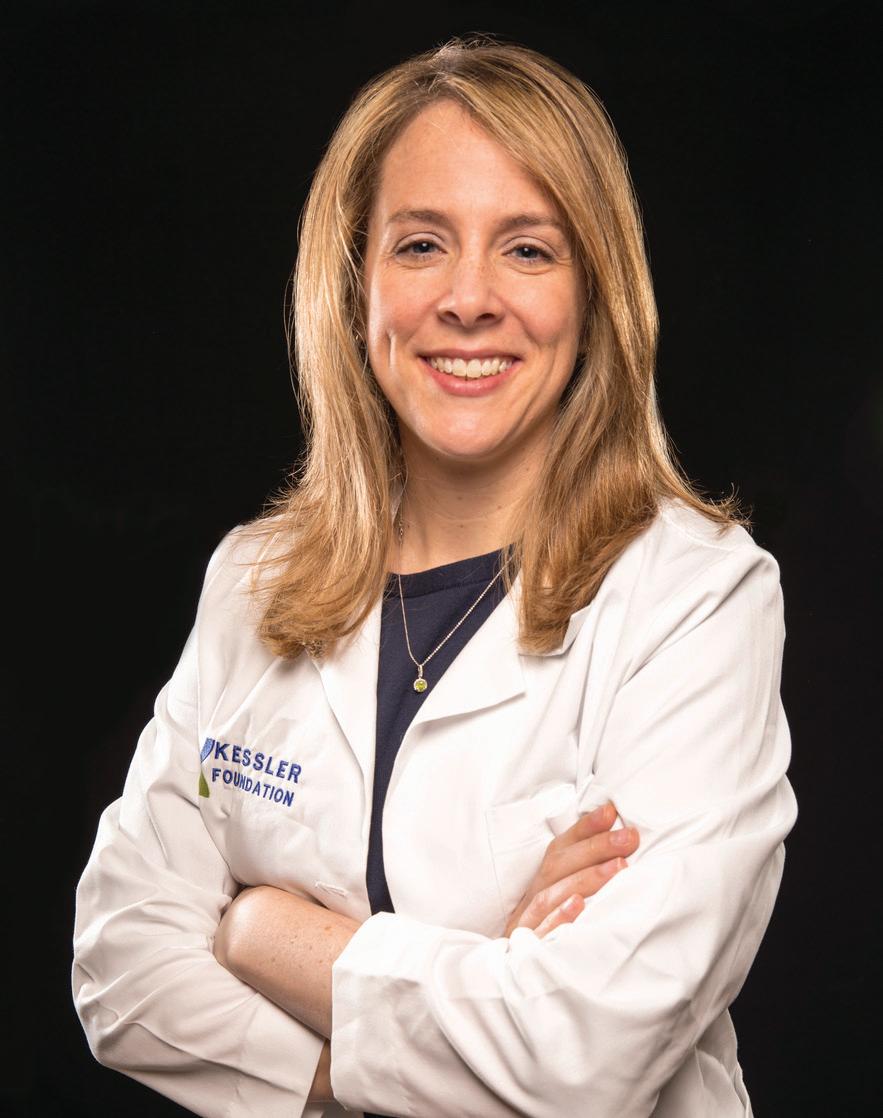
20
Karen Nolan, PhD
Gail Forrest, PhD
ReWalk ReStore, a soft, fabric-based exoskeleton, has features that appeal to physical therapists, as well as stroke survivors, according to Karen Nolan, PhD, assistant director of the Center for Mobility and Rehabilitation Engineering Research. Dr. Nolan, who led the study at Kessler Foundation, is encouraged by the addition of ReStore to stroke rehabilitation. “Research into different types of robotic devices has shown us new ways to help individuals regain mobility after stroke and other disabling conditions,” Dr. Nolan notes.
ReWalk Restore has a relatively low profile and can be worn to train over ground or on the treadmill. The garmentlike device connects to a waist pack that powers mechanical cables that lift the

weakened leg and time the leg movement to the person’s natural walking pattern. Initial studies show that the device is safe and reliable for gait training under the supervision of a physical therapist.
“We were pleased to have a role in testing this new type of wearable robot,” says Dr. Nolan. The Dean Janeway Fund of the New Jersey Health Foundation recently donated two robotic soft suits that will be used in further research, made possible by your support. “We look forward to seeing the outcomes that can be achieved by incorporating this technology in programs for stroke rehabilitation.”

Wearable robotics brighten outlook for people with disabilities.
Your Support Changes Lives: Impact Report 2021
Ghaith J. Androwis, PhD
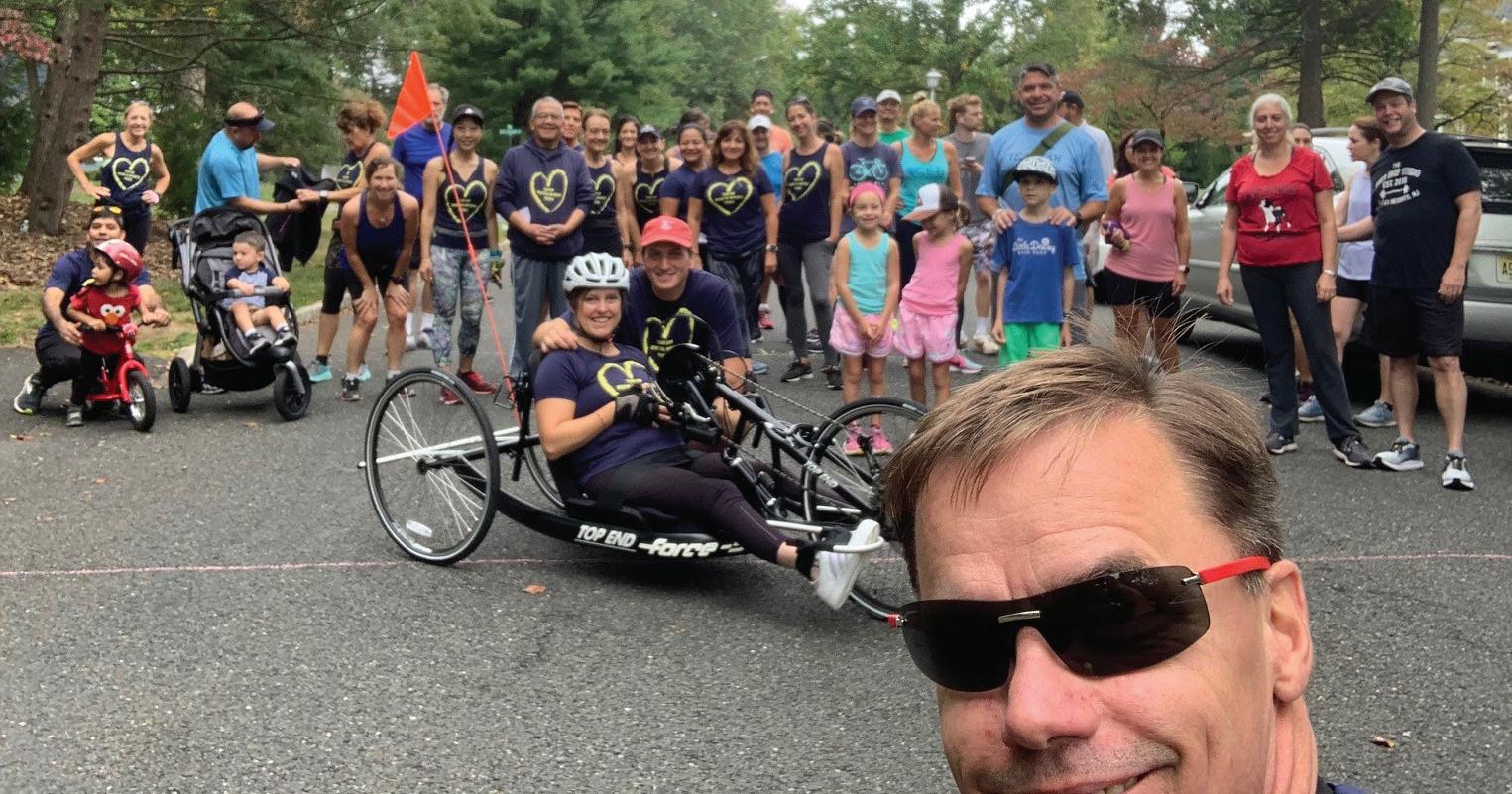



Last September, Kessler Foundation’s annual signature event was a first—a virtual Stroll ‘N Roll, presented by Pfizer and the Impossible Dream. People of all ages and abilities gathered safely in their own neighborhoods to prove that abilities are what matter. Together we raised over $165,000 to advance rehabilitation research and employment for people with disabilities. The generosity of friends like you made this happen.
Inspiring leaders created teams of champions to give back and make a lasting impact. Our dedicated Stroll ‘N Roll committee reached out to friends and family to make the event a success, despite challenging and uncertain times.
Join us this year for a hybrid Stroll ‘N Roll on Sunday, September 26, 2021, from 10 AM to 1 PM, either in person in Verona Park, or in your own neighborhood!
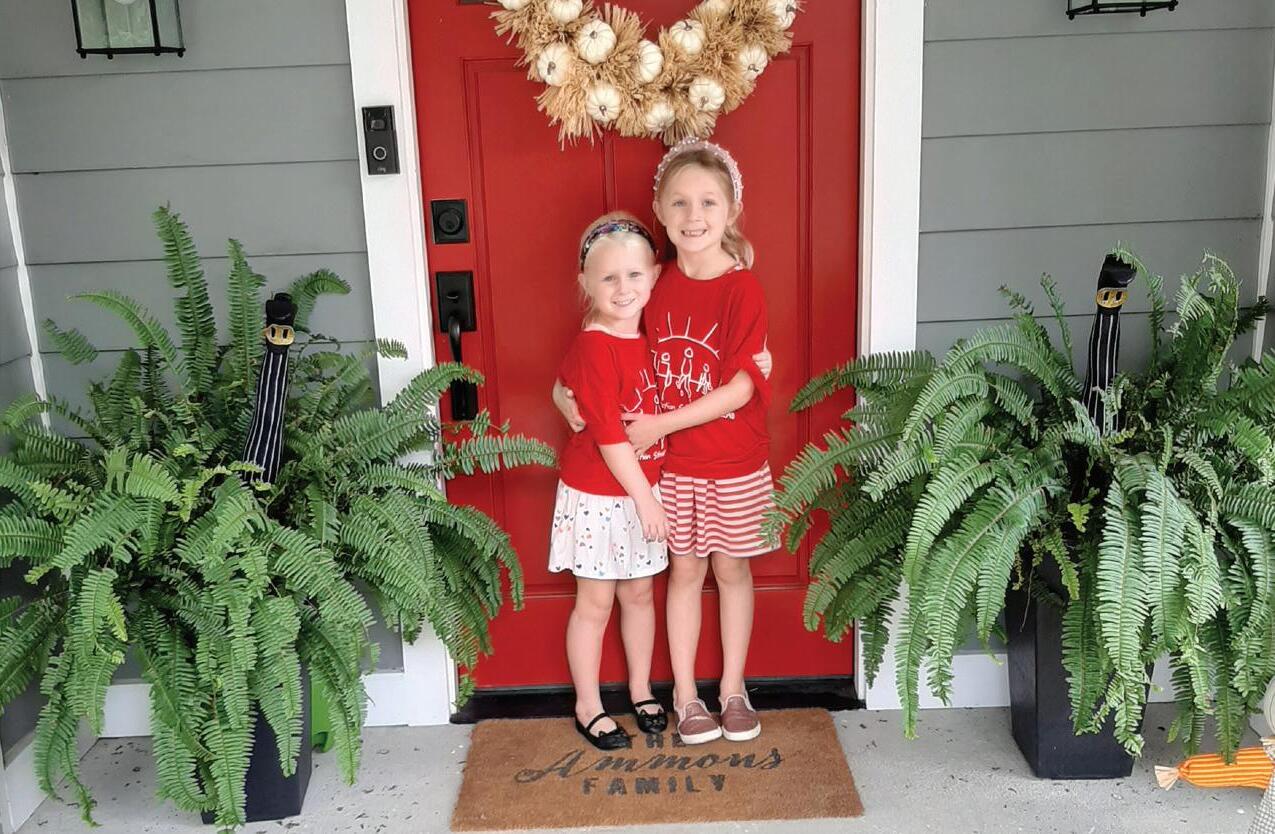
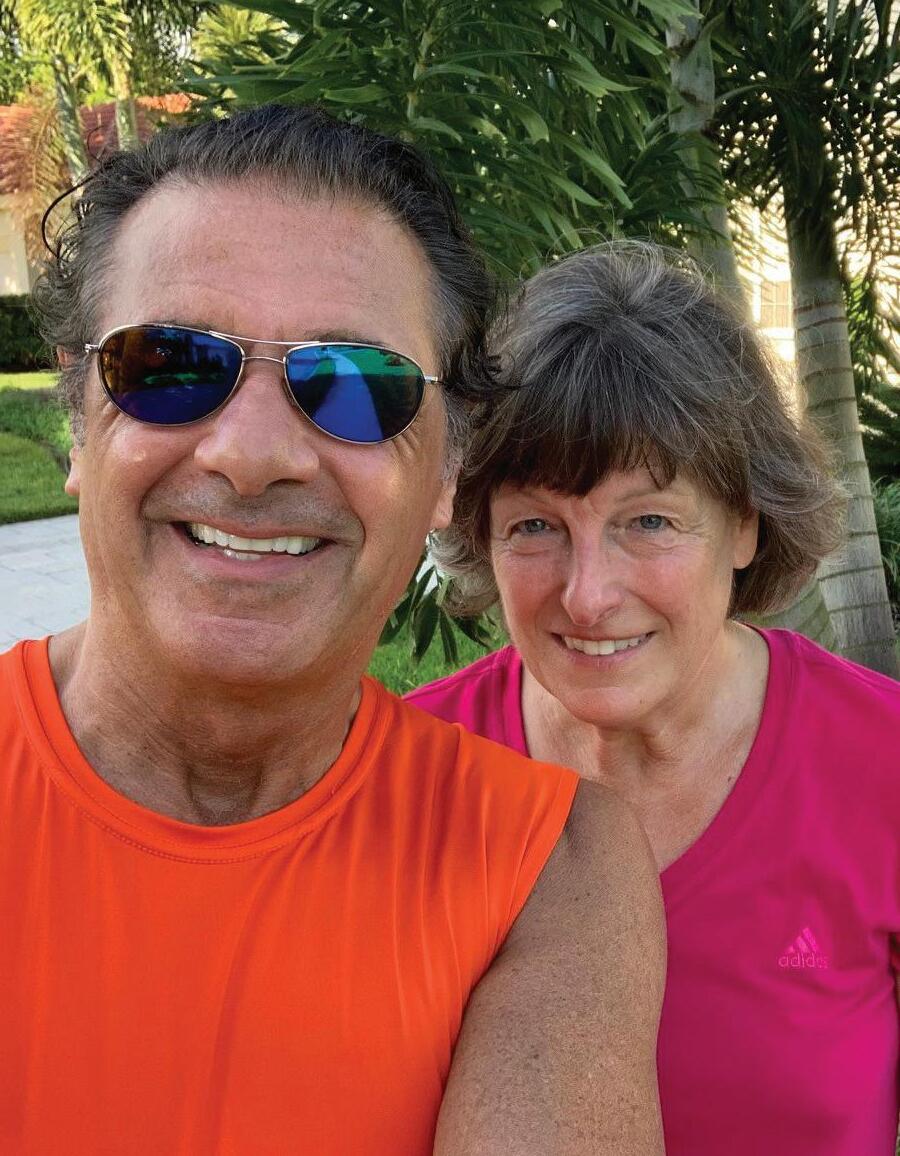
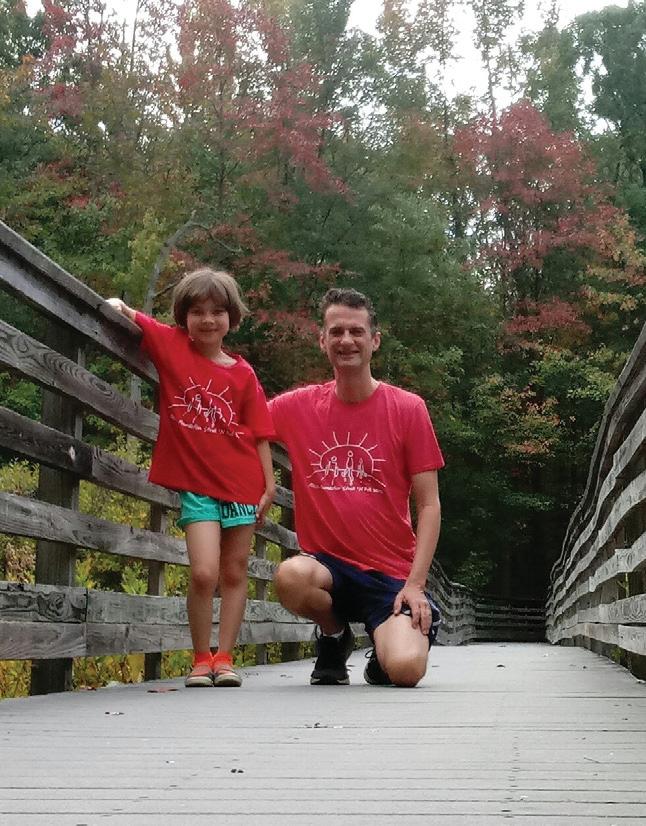

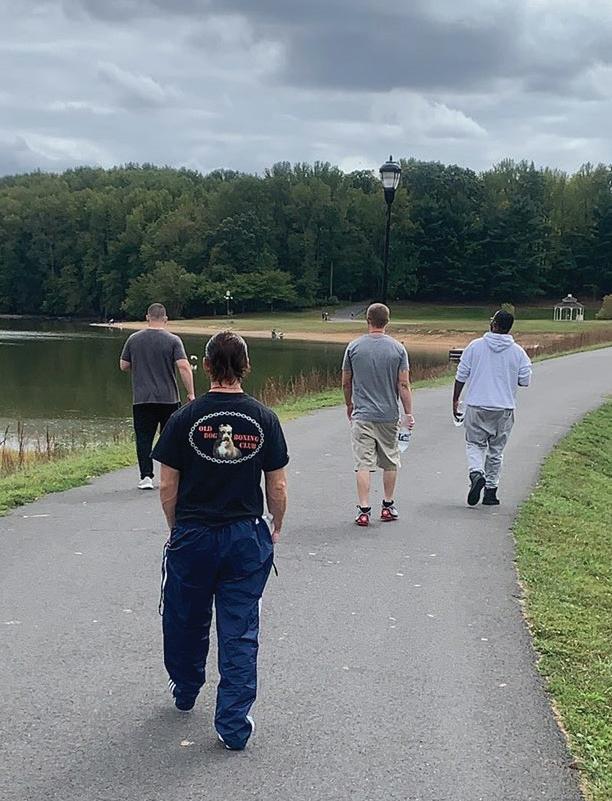

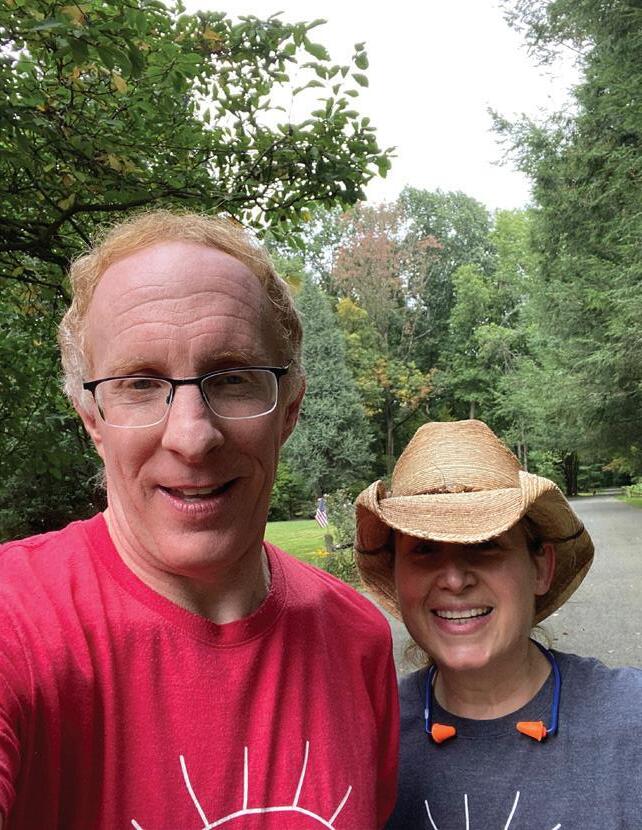

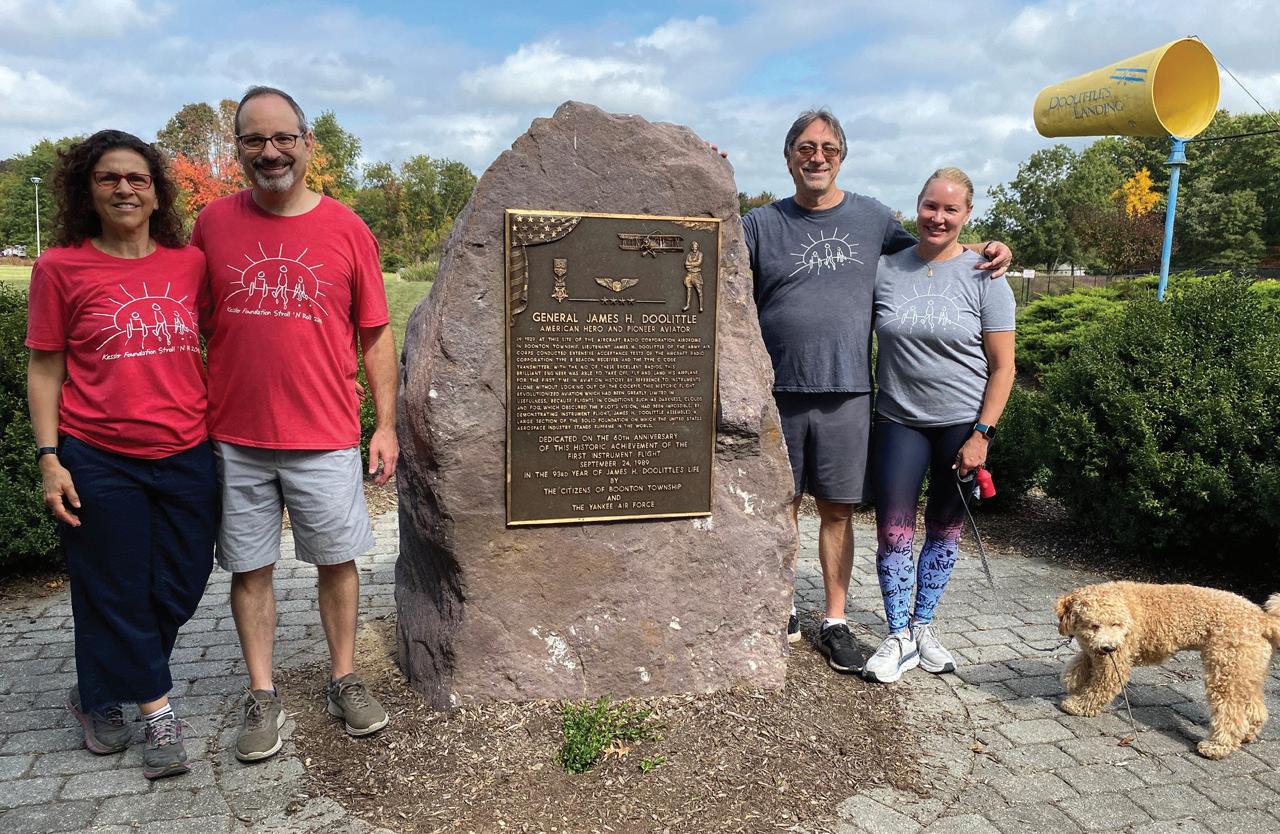
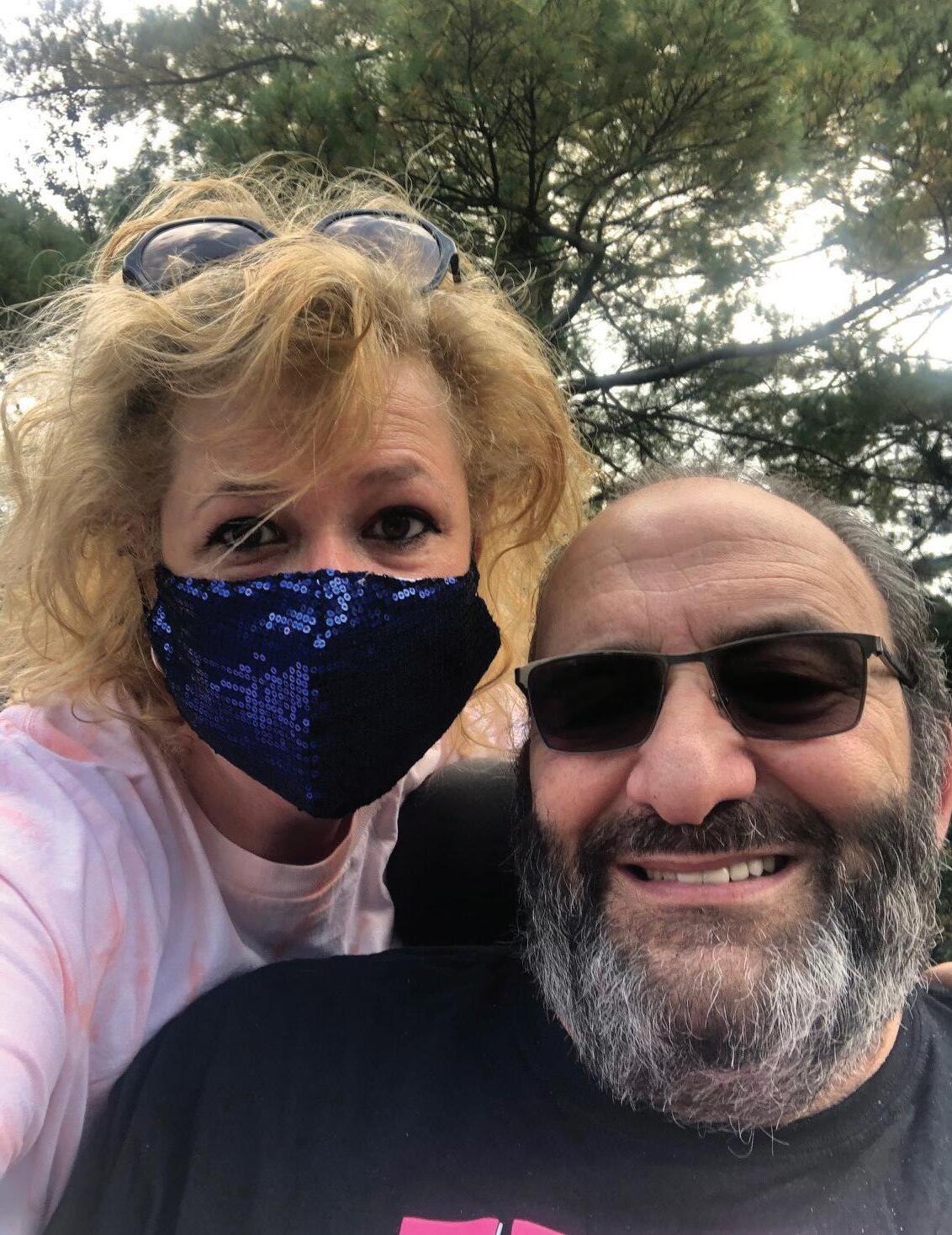
KESSLER SOCIETY GIVING THAT CHANGES LIVES

As a Kessler Society member, you propel rehabilitation research discoveries and innovative employment initiatives. As a result, people with disabilities reimagine what’s possible and realize the extraordinary. Year after year, you champion groundbreaking rehabilitation research and employment for people with disabilities—helping people take first steps, improve thinking and learning, and overcome obstacles to employment.
Kessler Society members honor Henry H. Kessler, MD, PhD, who founded Kessler Institute for Rehabilitation after serving in World War II. His vision was “…to treat the whole individual…to help him or her successfully regain physical, mental, social, vocational and economic usefulness to the fullest possible degree.”
Today, Dr. Kessler’s vision is reflected in the institutions that bear his name— Kessler Foundation and Kessler Institute for Rehabilitation, which consistently ranks as one of the best rehabilitation hospitals in the nation.
Our donors continue Dr. Kessler’s legacy. Membership in the Kessler Society is extended to friends who make annual gifts totaling $500 or more.
24
Henry H. Kessler, MD, PhD, founder of Kessler Institute for Rehabilitation
2020 Kessler Society
AMBASSADORS — $25,000 and up
Joy and Avi Avidan
Anonymous
Ranae Carpenter
The Carson Family Charitable Trust
The Derfner Foundation
Dr. Martin Diamond and Mrs. Shirley Diamond
Dr. and Mrs. A. R. Giaquinto
Pastora C. Goldner
Dean Janeway Endowment Fund at New Jersey Health Foundation
MaryAnn and Dean Janeway
Morgan Stanley
Anonymous
Pfizer Inc.
Estate of Frank Rea, Jr.
Reitman Foundation
Tim and Caroline Reynolds
Richard and Linda Ritholz
Estate of Florette R. Schoen
The Charles and Ann Serraino Foundation, Inc.
Henry and Mary Stifel
Wakefern Food Corporation
Wallerstein Foundation for Geriatric Life Improvement
BENEFACTORS — $10,000 - $24,999
The Walter Henry Freygang Foundation
JPMorgan Chase & Co.
David Legow and Sarit Catz
Estate of Debra J. Lezak
Liz and David Lowenstein
Deborah Mellen
Erin and David Schonbraun
Susan and Stephen Sudovar
User 1st
Anonymous
PATRONS — $5,000 - $9,999
Anne and Vic Ammons
Anonymous Kessler Foundation
Laurence S. Aronson
The Michael Bruce Fund
Gail and Bruce Bukiet
Myrna and Leonard Comerchero / Selma T. and Jacques H. Mitrani Foundation
Crewcial Partners
Francine and Michael Davis
Ellen and Rodger DeRose
Fundry LLC
Arthur J. Gallagher & Co.
Diane and Saverio Garruto
Ellen and John Germain
Susan and David Gibbons
Terri and Michael Goldberg
Alyce C. Halchak, Esq.
Mr. and Mrs. Howard Jacobs
Kessler Institute for Rehabilitation, Inc.
Dr. Ruth G. Legow and Mr. Gerald C. Legow
Michelle and David Margolis
Mary Anne McDonald, Esq. and Joseph F. Benning
Mary Rose Migliazza and Carl Guzzo
The Miller Family Endowment, Inc.
Northeast Capital Group
Glenn M. and Marilyn B. Reiter
The Philip W. Riskin Charitable Foundation
Ellen Salsburg
Sanofi Genzyme
Lyn Rosensweig and Bruce Schnelwar
Saul M. Simon
Bill and Mary Lou Weisser
SPONSORS — $1,000 - $4,999
Martin Barber
Saint Barnabas Medical Center
Doug and Lynn Borck
Bristol-Myers Squibb Company
Mr. and Mrs. John R. Cannell
CDW
Columbia Bank
The Cormac Group
Dr. John DeLuca and Mrs. Carmen Fritsche DeLuca
Steven Diamond
Dr. and Mrs. Edward Dimitry
Trevor Dyson-Hudson, MD
Will & Ann Eisner Family Foundation, Inc.
Elberon Development Group
Mr. Aaron Essner
FannieMae Foundation
Fidelity Charitable Gift Fund
Your Support Changes Lives: Impact Report 2021
Dr. and Mrs. Bruce M. Gans
Thomas P. Giblin
Cherie Giraud
Jen and Michael Halchak
Amy and Jeffrey Halper
Bob and Louise Herz
Bret Hirsh and Amanda Kate Hirsh
Homewatch CareGivers
Ms. Linda D. Howard
Huron Consulting Group Inc
Jewish Vocational Service of MetroWest
JP Morgan Charitable Giving Fund
The Kabacoff Family Foundation
Elaine and Dan Katz
Mary Kennon
Richard S. Kessler and Daphne Kessler
Dr. Steven and Mrs. Anna Kirshblum
Alice and Jacob Klein
Mr. and Mrs. Robert A. Kleinert
Izumi Hara and David Koschik
Mr. and Mrs. John Kukral
Nancy and John O. Lasser
Peter Lasser and Cynthia Potter
Lincoln Financial Foundation
Mrs. Tobey Lipschitz
Philip Lowit
Macquarie Group
Magna5 LLC
Anonymous
Mandelbaum Salsburg, PC
The Margetts Foundation / Donna and Tom Margetts
Diane and Nick Masucci
Max Recovery Group
Colleen McKendry
Wendy and Nikhil Minocha
Morgan Stanley Global Impact Funding Trust
Josie and Jeffrey Morris
Anonymous
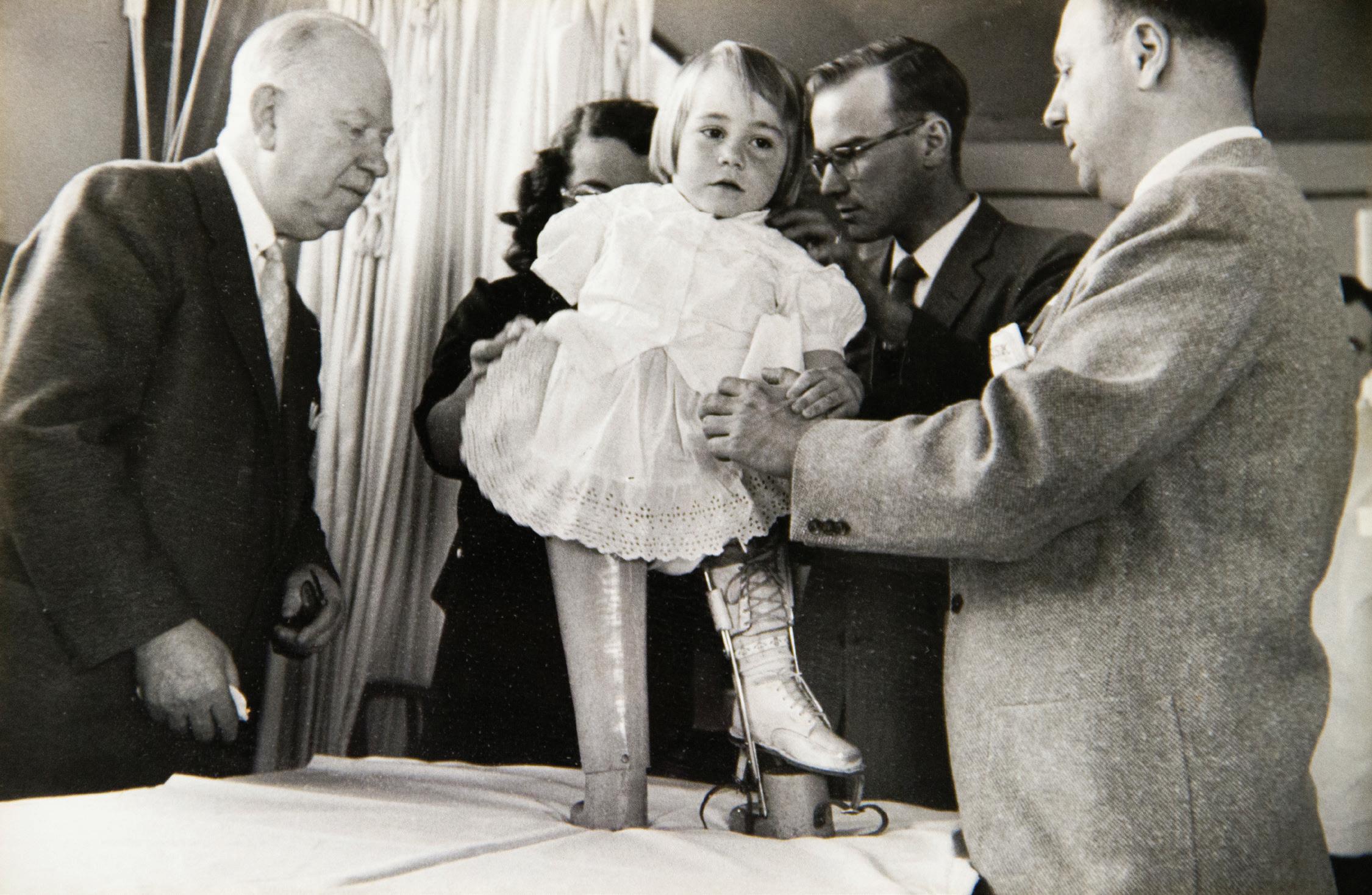
26
Kessler
Society members honor Dr. Kessler, pictured in 1955 at the Kessler Institute Children’s Clinic.
Nasdaq
The Craig H. Neilsen Foundation
NK Architects
North Jersey Masters Track and Field Club
Ms. Kathleen M. O’Connell
Parkhouse Foundation
Petry Engineering LLC
Michele Pignatello and Daniel Cordasco
Mr. and Mrs. Mark L. Pollard
PSEG, Inc.
Christopher and Dana Reeve Foundation
Marion and Michael Saffer
Sara and Bob Sanders
Geeta and Narain Sanjay
Ronald Slevin
John L. and Grace Soldoveri Foundation, Inc.
Jodi and William Squires
George R. Taylor
TD Bank
Susan and Guy Tufo
Margo and Frank Walter
The Wawa Foundation
Westminster Hotel
WithumSmith+Brown, PC
MEMBERS — $500 - $999
AmazonSmile Foundation
Atra Janitorial Supply Co., Inc.
Brian Barringer
Kerry A. Barringer and Rosetta Arrigo
Debra and Jonathan Bell
The Benevity Community Impact Fund
Theresa and Thomas Berry
Cassandra and Scott Bollinger
Cheryl and Craig Brod
Matthew Burke
CCI Construction, Inc.
Nancy and Nicholas Chiaravalloti
CTR Services, Inc.
Daughters of Israel
Anonymous
Jeff Diamond
James Dixson
Ekso Bionics
Joseph Falkenstein
Bruce L. Fishstein
Paul Ford and Nancy Young
Mrs. Valerie Fraser
Mrs. Jennifer Gandolfo
Gensler Charitable Gift Fund
Helene and Marvin Gersten
Samantha and Darren Good
Robert and Debra Goodman
Peter and Michelle Harbeck
Dana and Peter Hopper
Anonymous
Cynthia Kahler
Satish Kashyap
Jane and Andy Kessler
Walter and Debbie Kneis
Stephanie Koehler
Tom Koehler
Donald and Ellen Legow
Mrs. Blanche Lerner
Barbara and Gary Lewis
Mr. Evan S. Lipstein
Mark Lipstein
Dr. and Mrs. Gerard A. Malanga
Denise Marietta
Patricia and Winslow Marston
Mr. and Mrs. David P. McCarthy
Ronald Moore
Stanley and Barbara Muroff
Alexandra Nee
NJM Insurance Group
John H. O’Neill, PhD and Suzy O’Neill
Lisa J. Peterson and Daniel J. Peterson
Catherine and Vincent Pignatello
Susan and Aniceto Rivera
Randi and Rob Rudnick
Anonymous
Your Support Changes Lives: Impact Report 2021
Susan and Richard Sandler
Mr. Donald N. Schatz
William Sheridan
Stephanie and Warren Spar
Seth Stoller
Ms. Ilene K. Tamburri
Owen M. Toolen III
Mr. Barron Wall and Ms. Debbi Brendel
Dr. Guang Yue and Mrs. Nancy Yue
Mr. and Mrs. Donald Zief
In 2020, inspiring leaders raised funds to champion research and employment for people with disabilities.
Carla Basante
Beth Carr
Nancy Chiaravalloti
Michaele Clayborne-Crosby, Team Crosbys Care
Nicole Cordasco, Team JCHS Field Hockey
The Family of Franklin Frederick Davis
Matt Dawes, Team Gallagher
The Family of Diane DeLisi
The Diamond Family, In Memory of Kenneth Richard Diamond
Gina Friedman, Team Strollers 4 Strokes
Cherie Giraud, In Memory of Matt and John Giraud
Samantha Good, Team Sam
Alison Haight, Team Stroll Train
Rosalie Hannigan
Kiran Karunakaran
Tiffany Kung
The Family of Dorothy Landvater
Juliana Blieberg and Jeremy Lipstein
Donna McDougal
Victoria McDougal
The Family of Norman Menz
Nancy Moore, Team NNL TBI Research
Terry and Kevin Murray and Family, Team Comeback Kevin
Karen Nolan, Team Mobility and Rehabilitation Engineering Research
Eugene Opsasnick
Janki Pandya
Michele Pignatello, Team Development
Maria Queyquep, Team Vicky
Rebecca Shulman, Team JVS
Adam Small
The Family of Raymond “Ray” Jerome Snyder
David Stern
Heather Strazza
Lauri, Jeff, and Claire Wactlar, Team HR/Finance/IT
Ali and Pete Welch, Team Welch
Kathy Woeste, Woeste’s Buckeye Brigade
In 2020, civic-minded organizations generously matched gifts made by individual donors.
Automatic Data Processing
Bank of America Charitable Foundation
Deutsche Bank Americas Foundation
FannieMae Foundation
Johnson & Johnson Family of Companies
Lincoln Financial Foundation
Macquarie Group
The Merck Foundation
Novartis Corporation
William J. and Dorothy K. O’Neill Foundation
Pfizer and Pfizer Foundation
LEGACY DONORS
We are grateful to these friends who have made provisions for Kessler Foundation in their estate plans.
John J. Brauss, Jr.
Vincent Comperatore
David Legow
Barbara and Gary Lewis
Elizabeth and Kenneth P. Middleton
Glenn M. and Marilyn B. Reiter
28
Joanne and Fred Salzmann
Anonymous
James A. Schmitt
Guy Tufo
Trustees
Laurence S. Aronson
Janice M. Beauchamp
Michael P. Davis
Rodger L. DeRose
M. John Germain
Alexander R. Giaquinto
David Gibbons
Terri Goldberg
Michael Herz
Dean Janeway
David Legow
David Margolis
Deborah Mellen
Mary Rose Migliazza
Michael A. Saffer
Ellen Salsburg
Bruce M. Schnelwar
David Schonbraun
Saul Simon
Guy Tufo
C. William Weisser
Diane Zezza
Trustees Emeriti
John R. Cannell
Jack J. Confusione
Richard C. Fowler, Jr.
Robert H. Herz
John O. Lasser
Barbara Lewis
Elizabeth Lowenstein
W. Thomas Margetts
Antonia S. Marotta-Brinton
Robert W. Parsons, Jr.
Mark L. Pollard
Glenn M. Reiter
Wendy M. Richman
Allen J. Sinisgalli
Stephen G. Sudovar
Francis A. Wood, MD
Your Support Changes Lives: Impact Report 2021























 Matthew J. Smith, PhD
Matthew J. Smith, PhD
 Glenn Wylie, DPhil
Glenn Wylie, DPhil






















